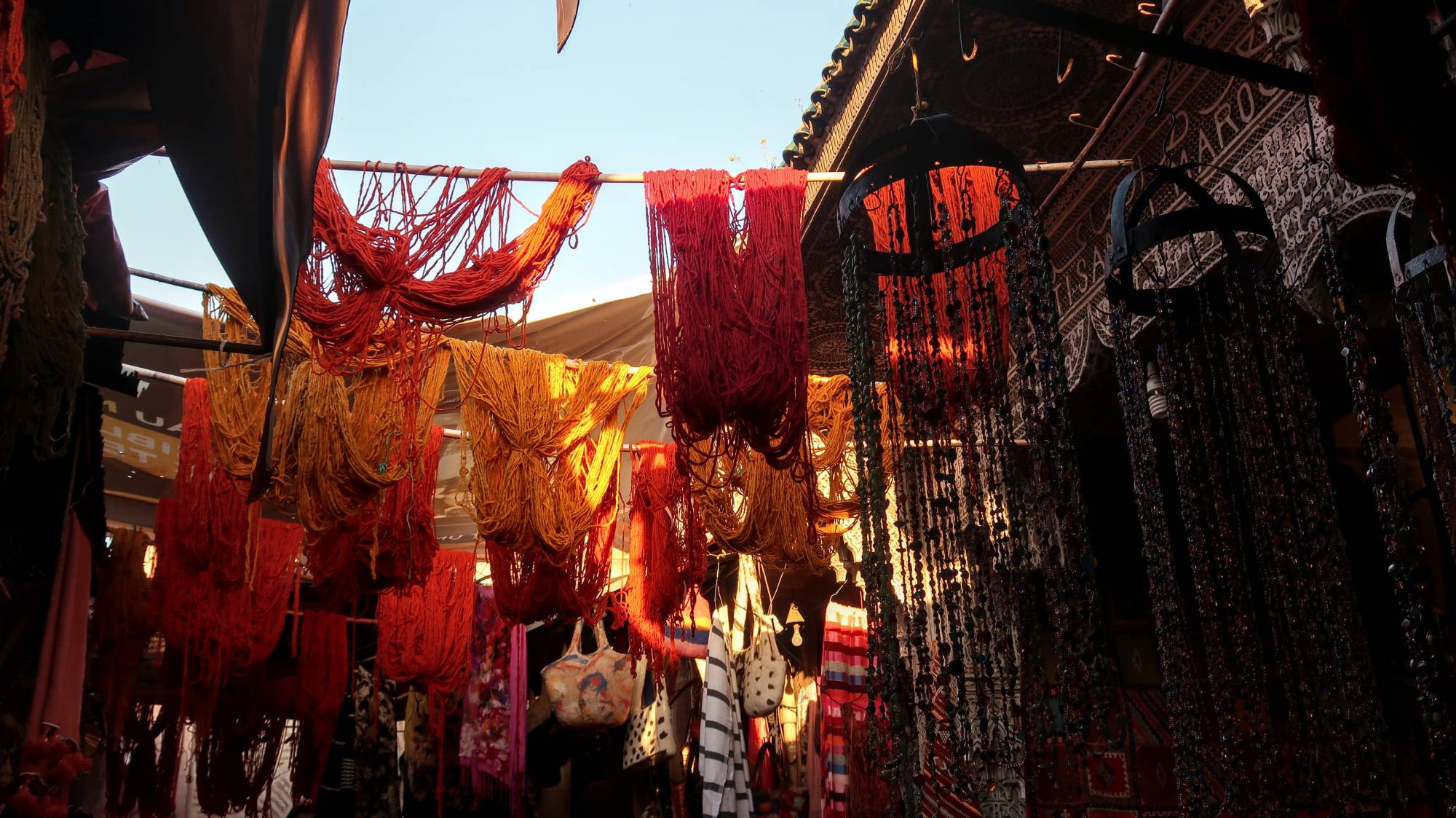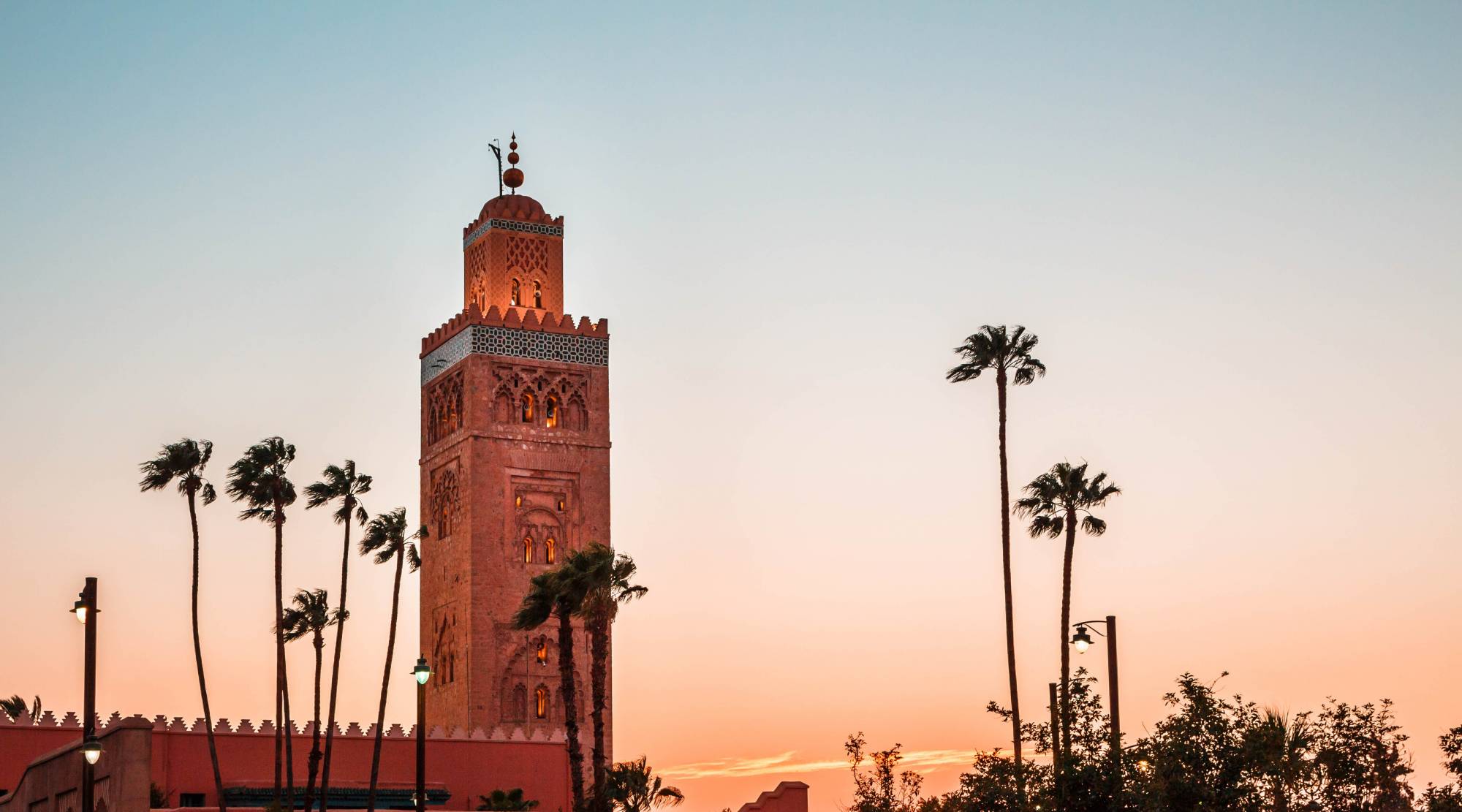Visit Marrakech: an exotic, traditional and cosmopolitan destination, a place with a secret charme where to find peace of mind
Inspiration
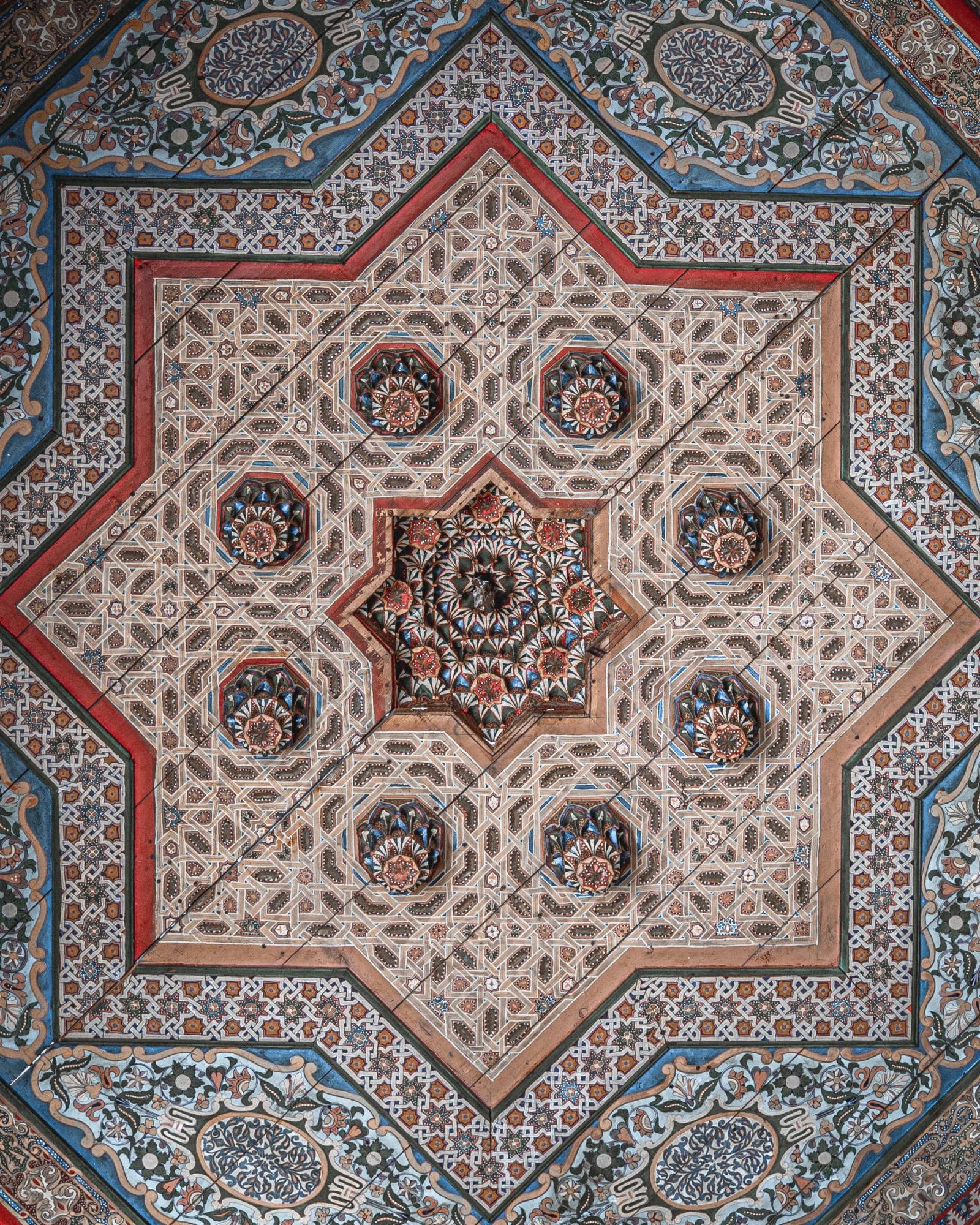
Morocco and Marrakech, in particular, is an extremely fascinating country that needs to be lived in a slow and relaxed manner, following its traditions and history. Marrakech, also known as Red City because of the typical color of its traditional buildings, is one of the most mysterious pearls between the Mediterranean Sea and the Atlantic Ocean.
Founded in the XI century by the Almohads and once known as the garden city, Marrakech is still able to surprise its visitors with large orchards and fragrant flowers.
One of its peculiarities that make it so mystic is definitely its architecture, one of its jewels, its souks, and its marvelous gardens at the foot of the Moroccan High Atlas. However, this splendid city also hides a surprising glam-chic side, far from mainstream tourism.
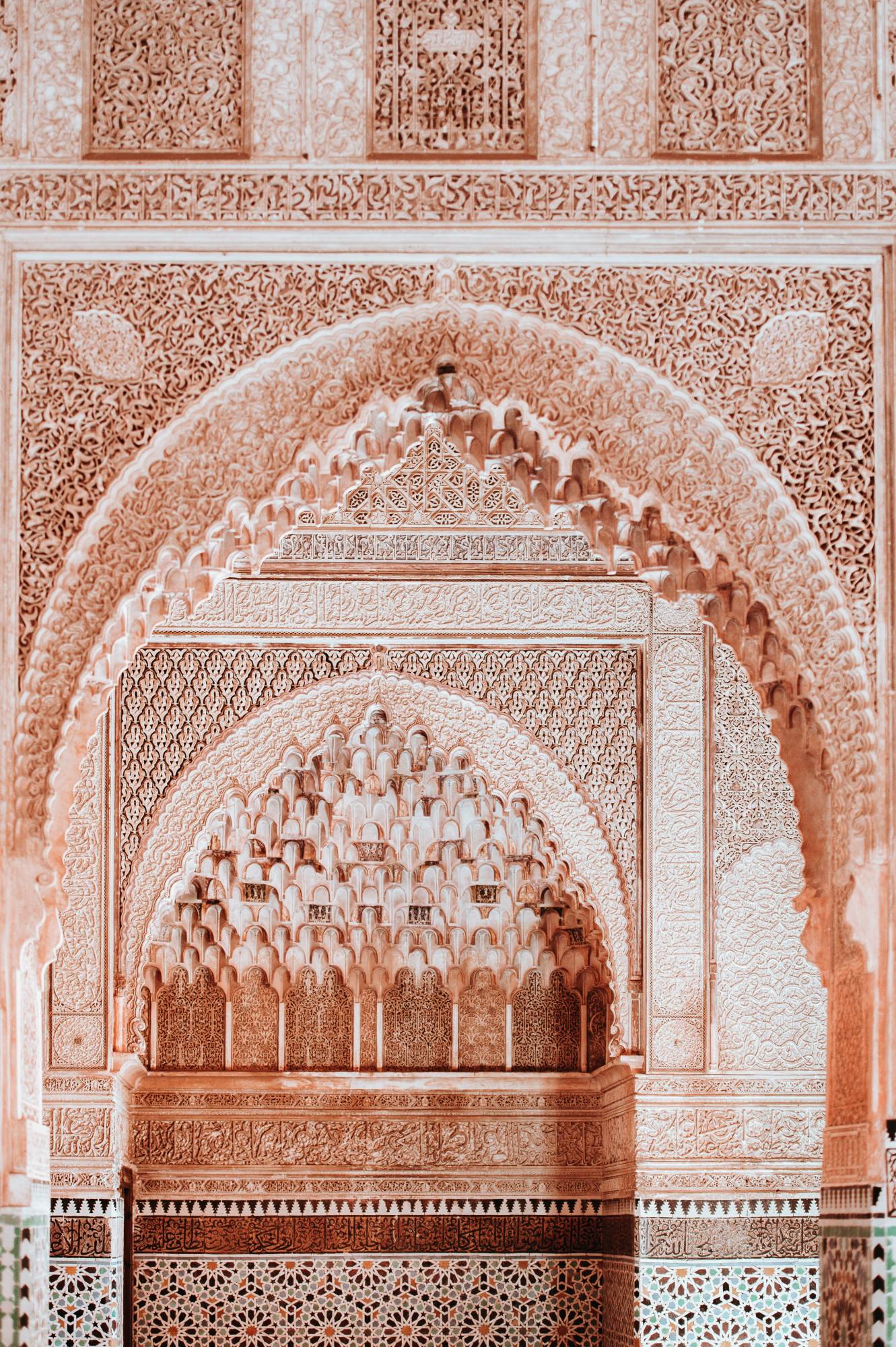
Marrakech has always fascinated its visitors thanks to its gentle sunset and to the large number of gardens that make the city look like a completely green place with palm and fruit trees in the middle of the barren Moroccan land, a couple of hours away from the desert and not far from the sea.
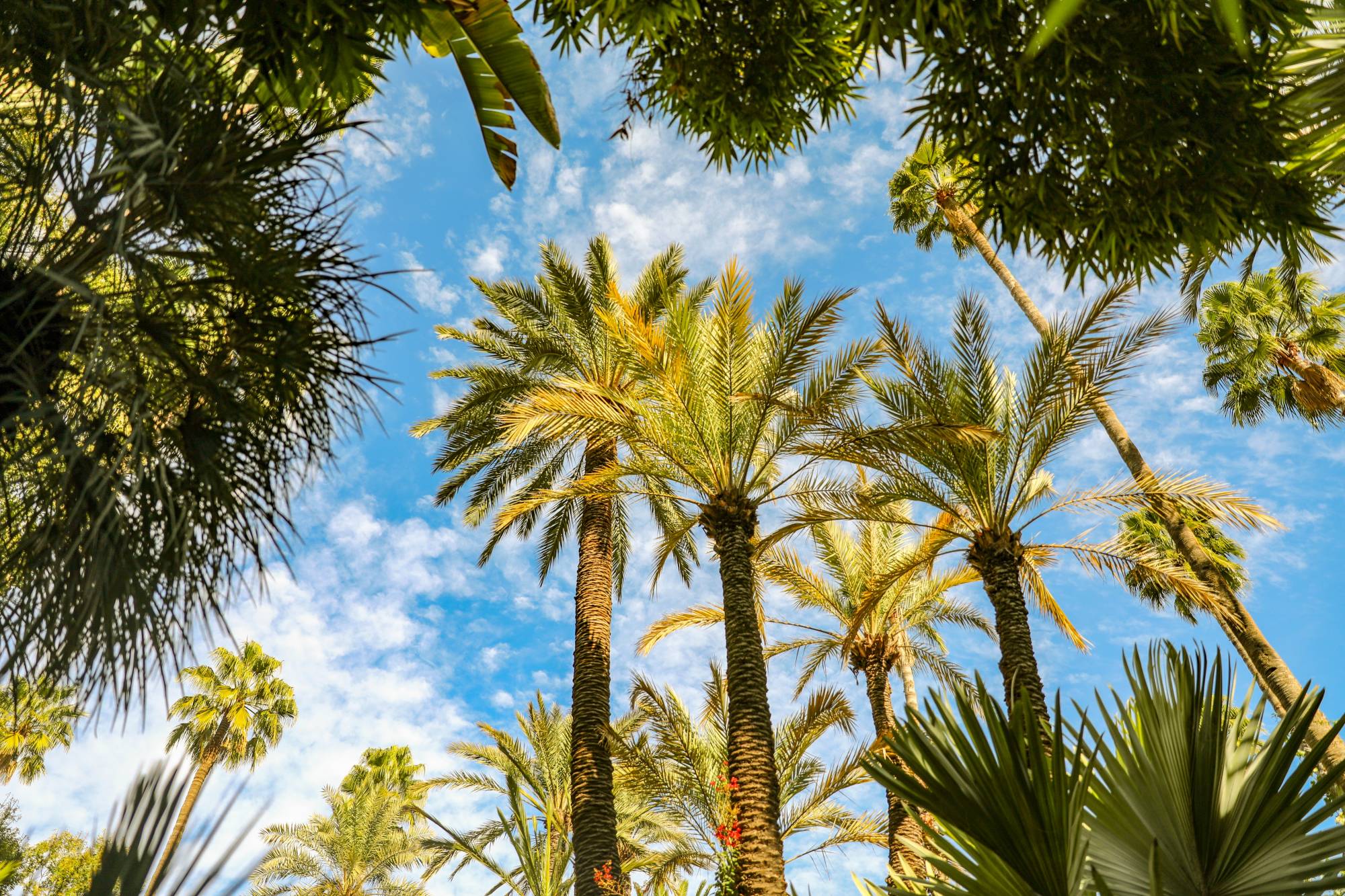
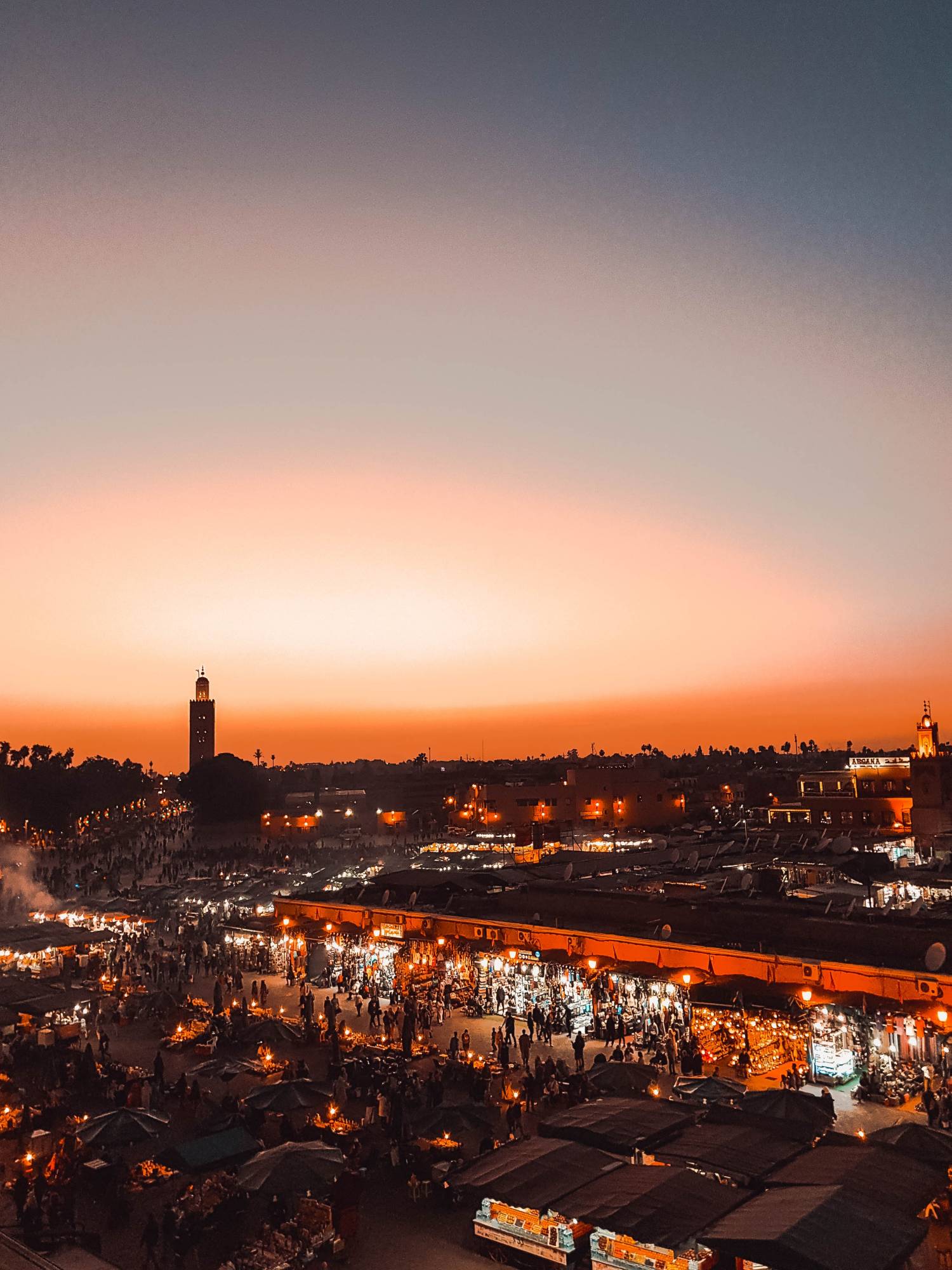
Marrakech is an intriguing city, enclosed in a magical box that hypnotizes its visitors like a real spell. It shows itself in its real splendor and its pure beauty. Visiting Marrakech, you will be fascinated by a millennial city in which the East meets Africa, local meets global, and tradition meets contemporaneity.
A charming city, easily reachable with a short flight from Italy, Marrakech is a magical place where to spend a relaxing weekend full of shopping, relax and delicious food. Lively, colored, joyful and noisy, Marrakech can fascinate its visitors with its charming atmosphere that mixes an authentic Moroccan soul to international and cosmopolitan contaminations.
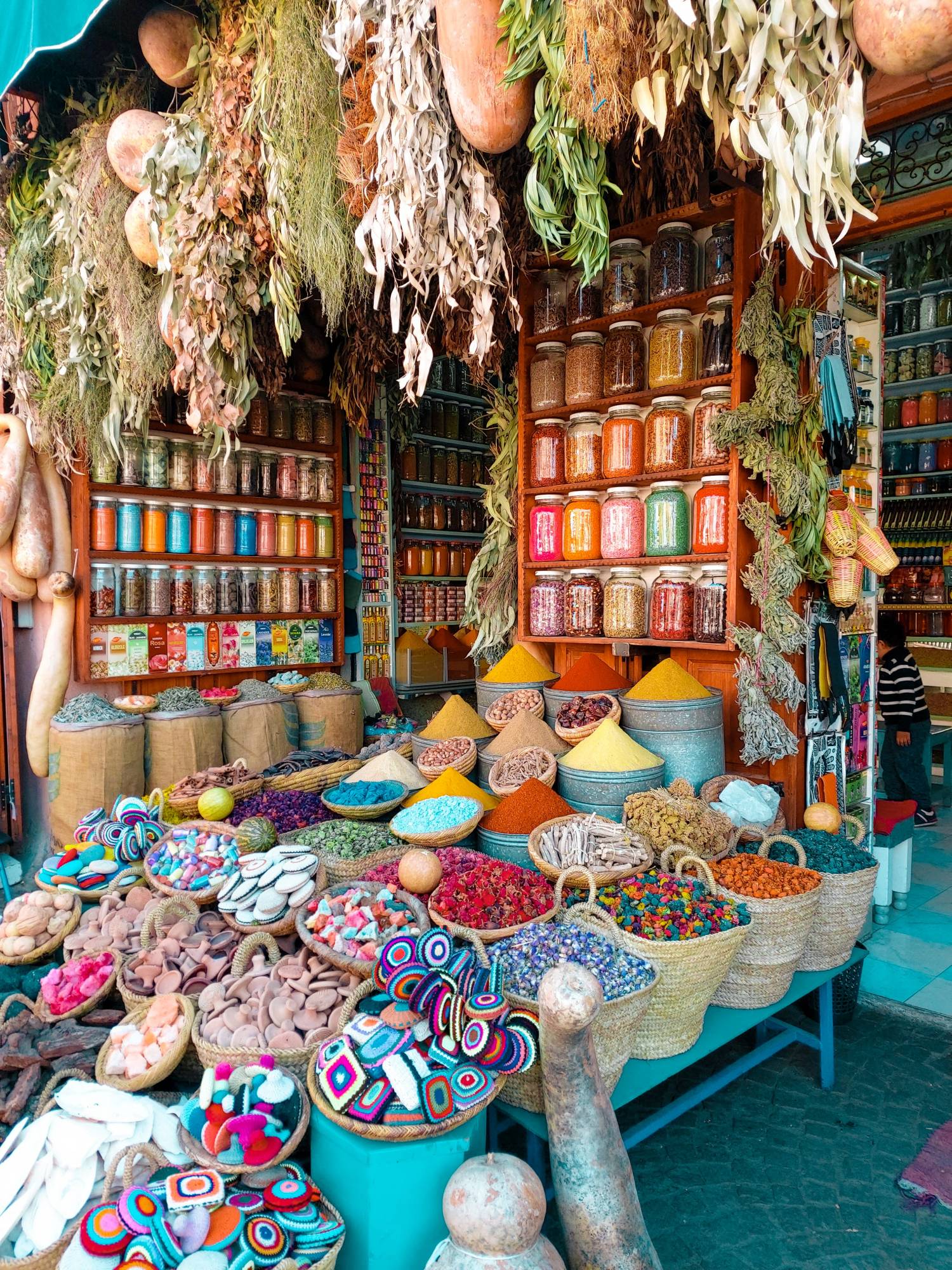
Spring is definitely the best period to visit Marrakech for its beauty, enjoying Easter in total relaxation surrounded by orange and pomegranate trees and delicious verbena tea. Marrakech, like all imperial cities, is divided into two areas: the Old City with ancient buildings, mosques and the souk - the Medina - surrounded by ramparts of beaten clay, and outside the walls, the Ville Nouvelle built by the French in the 1930s during the colonial domination.
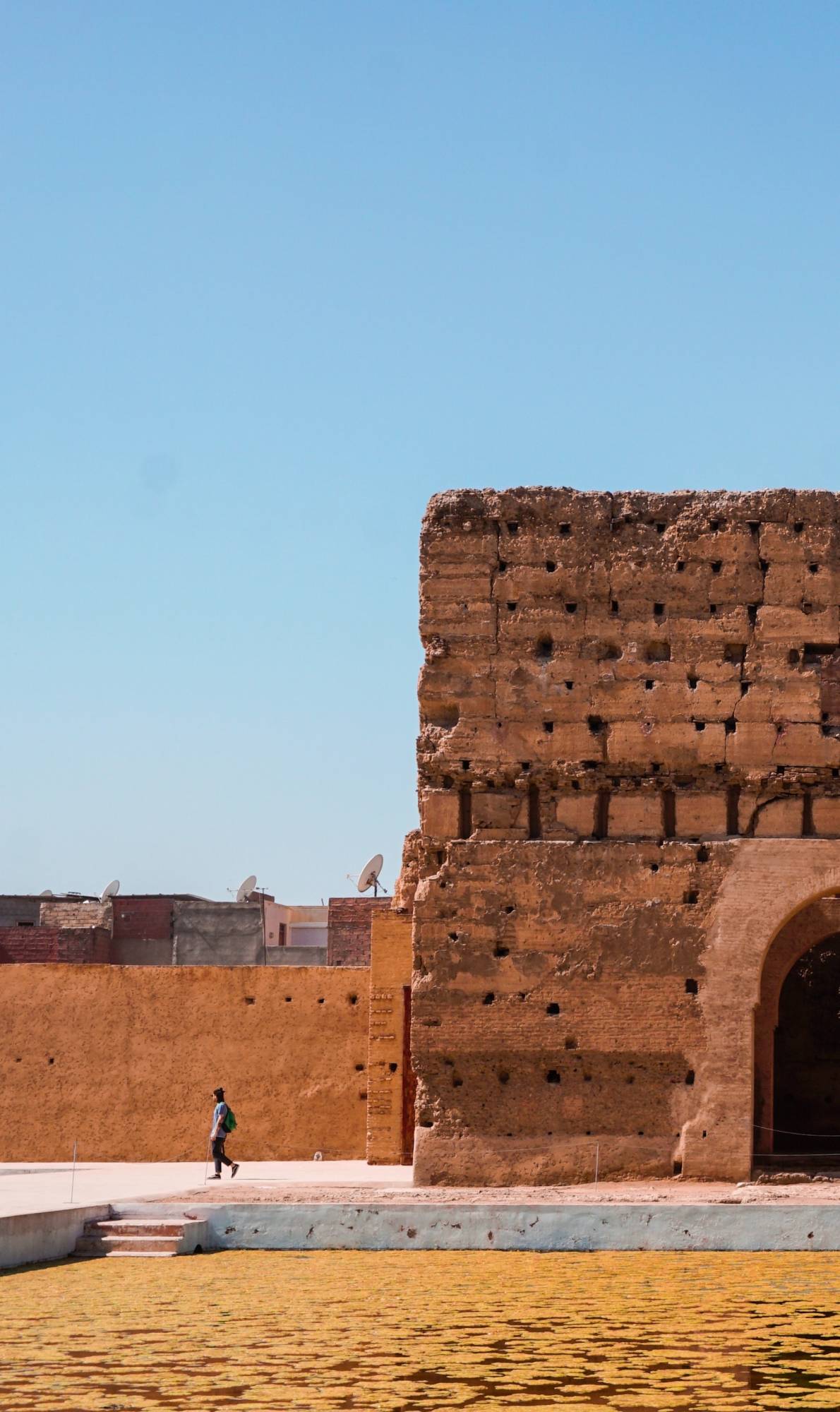
To discover the most authentic Marrakech, it is necessary to visit the heart of the city: the Old City. The Medina, Unesco World’s heritage since 1985, is a labyrinth of dusty streets and peculiar small shops. If you find yourself in the Medina, it is important to know that the only drink available is tea; alcohol is forbidden and buildings cannot have more than 3 floors. Besides, if you visit the traditional souk of the Medina you should immerse yourself in its sounds and perfumes, losing the orientation and letting things flow naturally.
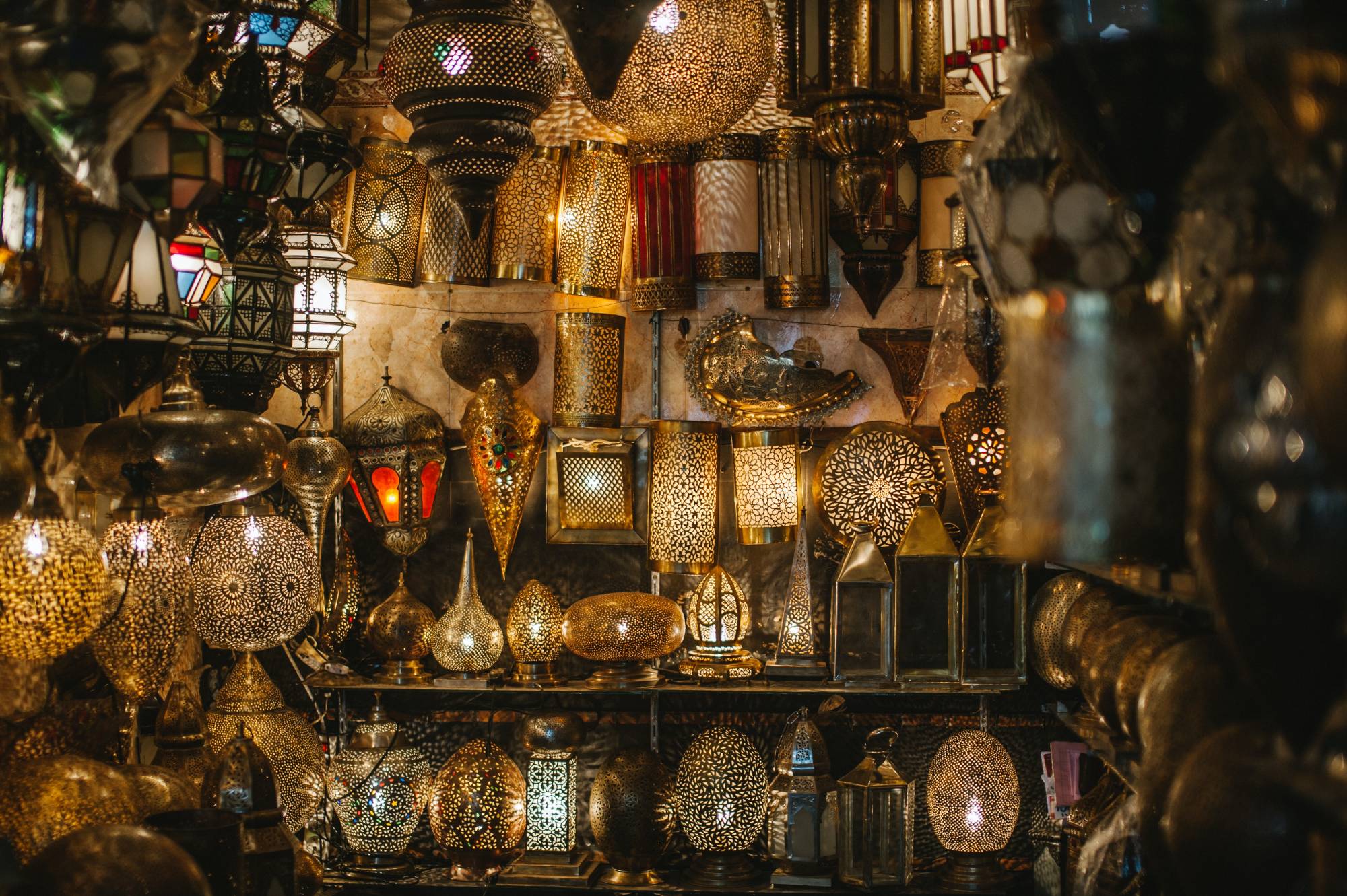
Negotiation is a cultural tradition in Marrakech: talking, drinking tea and discussing prices at the same time. A bargain is fundamental for locals and if you do not negotiate there is a high chance that you will end up paying an item to double its actual price.
Each section of the souk is named after the product that it offers, clothing, spices, leather, slippers, wool, wood, porcelain, or after the artisans that work there such as carpenters, dyers, and blacksmiths. Inside the souk, you cannot miss the Soul Smata that sells leather colored slipper, the Semmarine with purses and bags of all kinds and the dyers’ Souq Sebbaghine.
For those who decide to immerse themselves in this magical city it will be impossible to leave the souk without buying a pair of the famous colored Moroccan babouches.
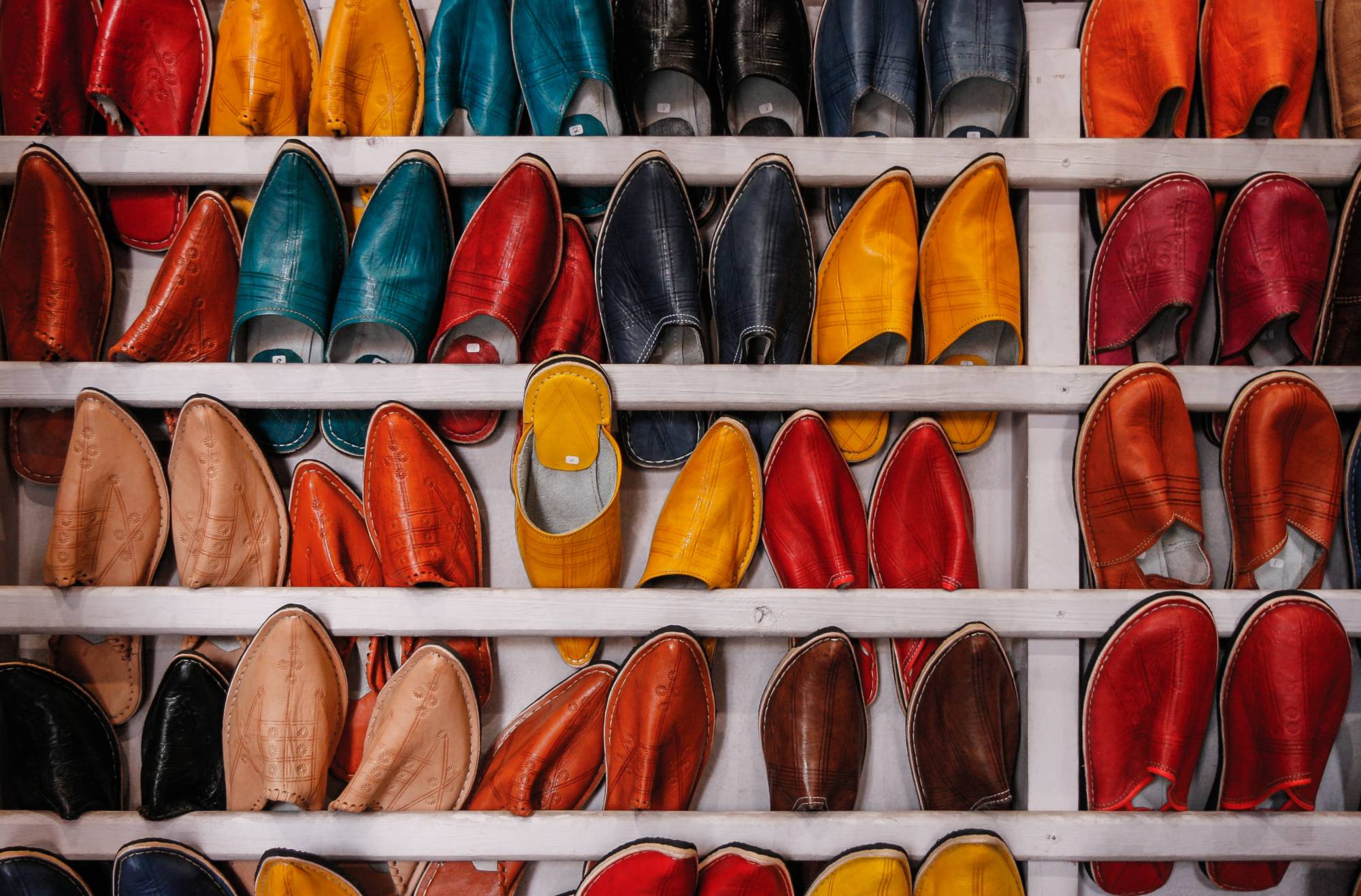
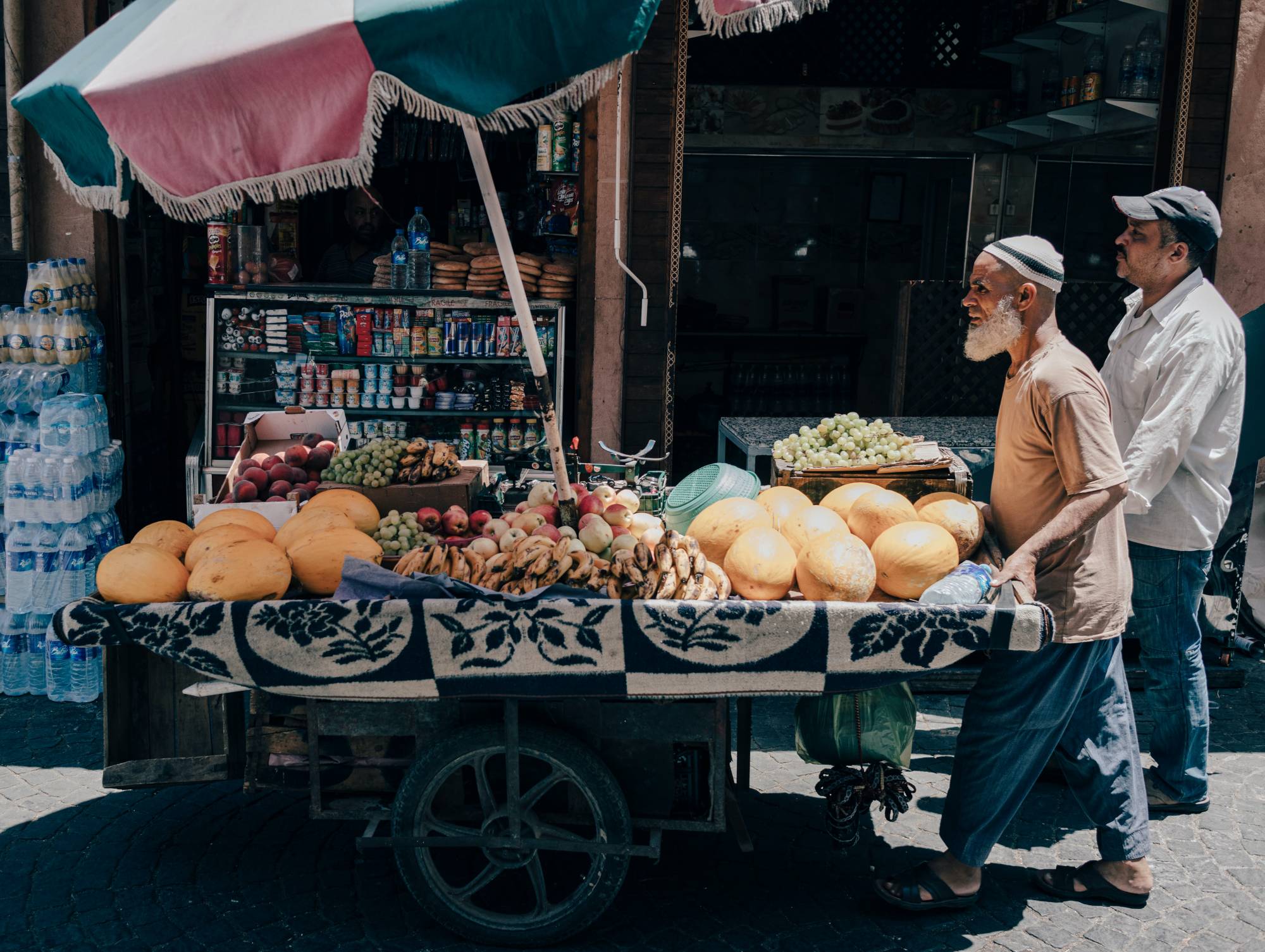
This square, like a painting, represents a perfect panorama in its imperfections. If you are in the Old City, it is worth visiting the Jewish Quarter.
In front of El Badi Palace is the Mellah, with the synagogue linked to the cemetery and the covered market. In this place rich in ancient history, the houses have balconies with a view on the streets, a peculiarity of the Jewish Quarter of Marrakech.
Leaving the crowded old city and taking the Avenue Mohamed V, one arrives at the heart of the new city. The symbol is the Guéliz neighborhood with its modern piazzas where the majority of the foreign residents live. In this neighborhood, there are many offices, banks, restaurants, open-air cafes, fashionable bars, as well as art galleries and stores selling brands from across the world. The true aroma of Morocco can be enjoyed in the Central Market, in the Rue de la Liberté, frequented by the locals who buy fresh food, flowers, and household products.
Another modern residential complex is Hivernage, to the south of Guéliz, with towns and five-star international hotels, the new opera theater, and the Palazzo del Congresso. Turning at the Avenue Mohamed V, you arrive at Medina across from the Nkob Bab, not far from the minaret of Koutoubia, the famous mosque with its minaret on a square base, built by Yacoub el Mansour at the end of the 12th century.
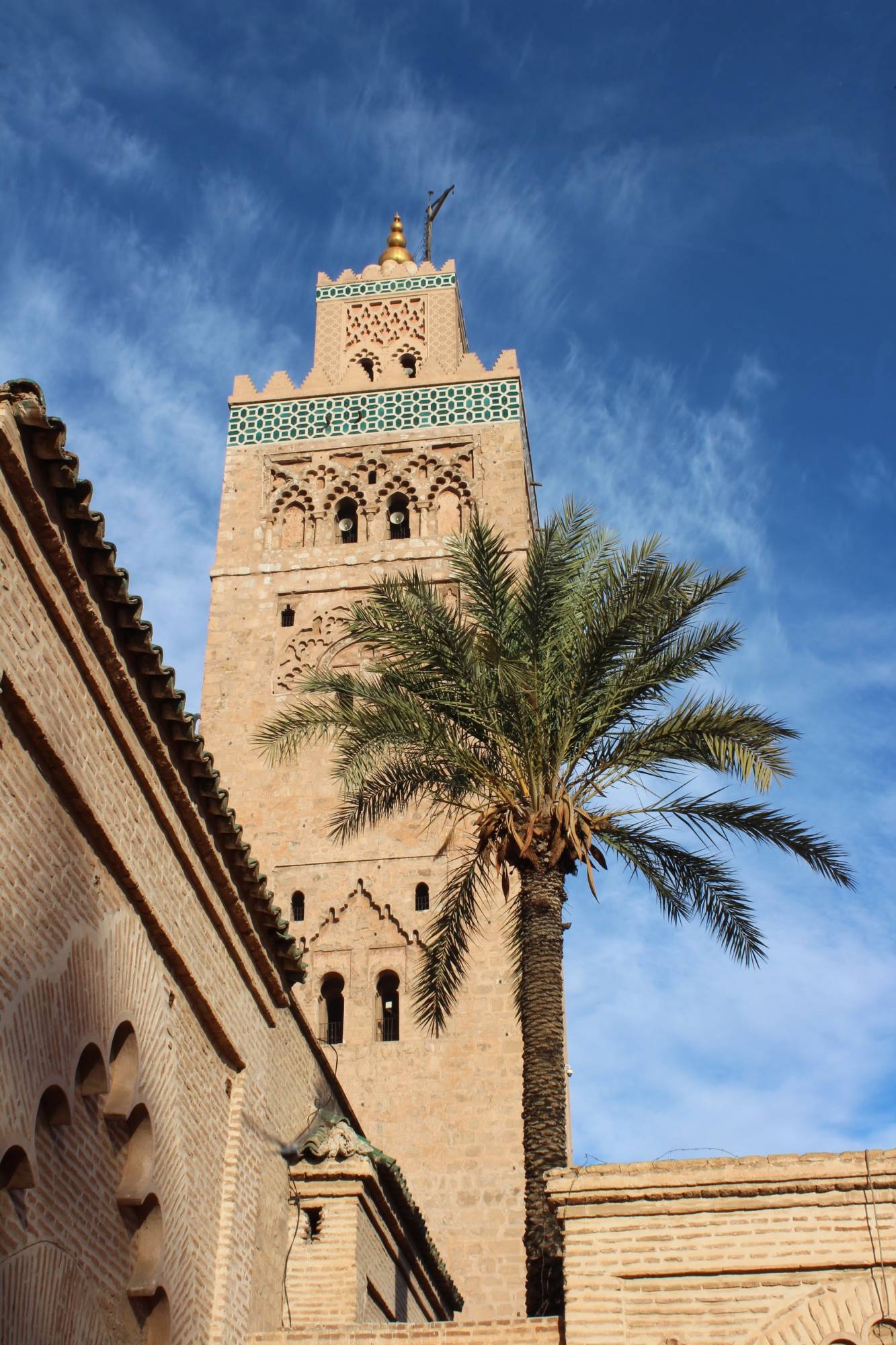
After arriving in the city, it is advisable to make a reservation in an elegant riad, which is abundant in Marrakech and close to the colorful Medina district. The structure is typical of Moroccan hospitality and includes many different rooms on the lower floors, including an internal courtyard that is typically furnished with a fountain or bath for water. Sometimes, these fountains were transformed by guests into actual pools. Inside these buildings, you can breathe in the typical atmosphere that guarantees an authentic stay while remaining just a few steps away from the historic downtown area.
The heat, the noise of the traffic, and the bustle of the residents intermixes with the peace and tranquility of the flowing water. This is the unique atmosphere of a riad and its peaceful courtyards. It is true that when one thinks of Marrakech, the mind turns immediately towards its hammams, Medina with its alleys, and its souks where you can enjoy the same frenetic shopping experience as the locals. It is also true that if you organize a vacation in this splendid city, you should get a peaceful night of sleep in a riad, the typical residence of Moroccans.
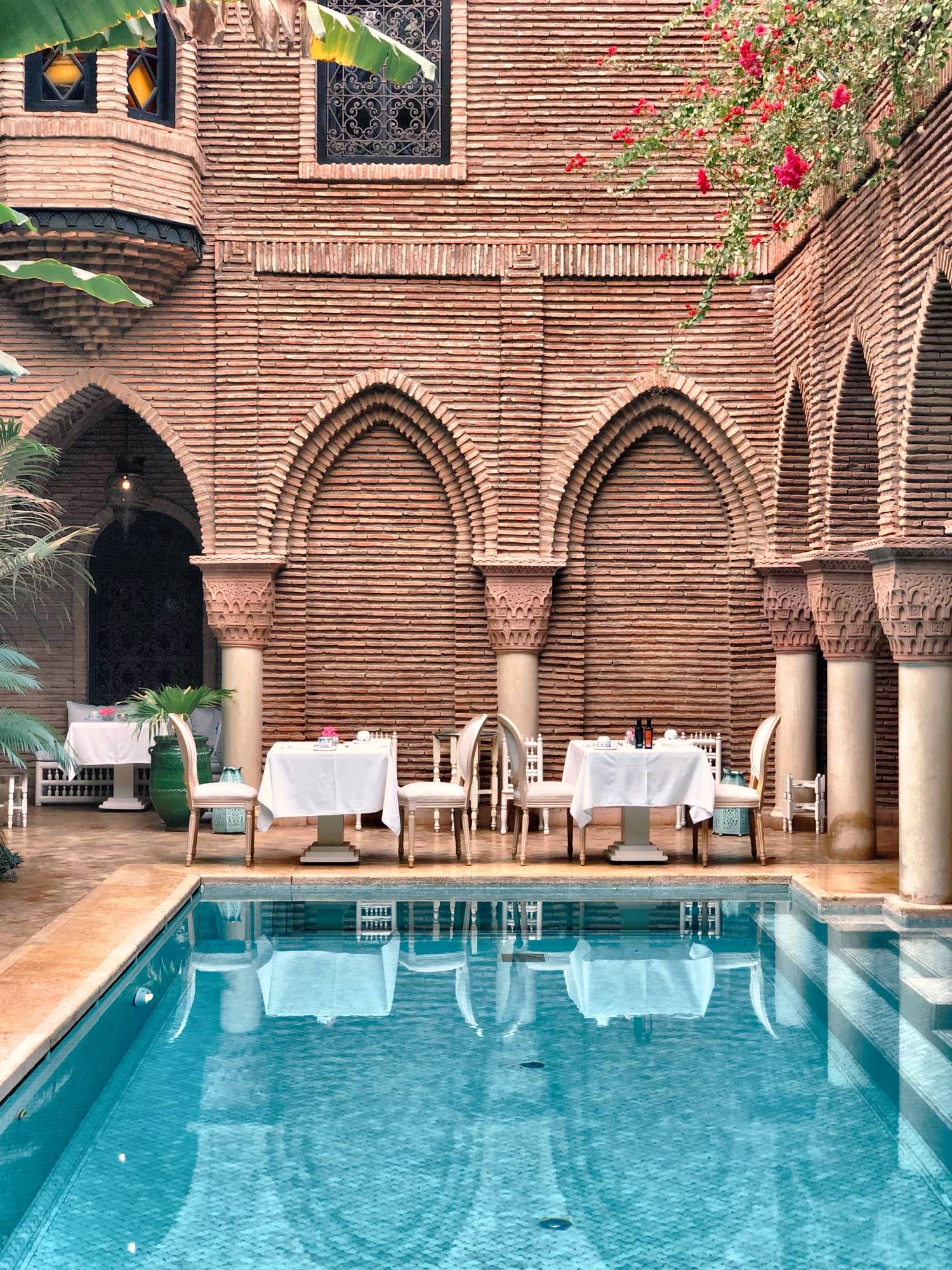
In fact, the riads and the dars are the typical Moroccan homes, complete with welcoming and highly desirable courtyards, gardens, and patios that are common to many of the most characteristic hotels in the city. In Marrakech, there are so many of them, often quite luxurious, with a focus on design and attention to detail, thereby making your vacation feel like a dream from One Thousand and One Nights.
A truly unusual and little-known gem is the riad secret garden, the living heart of the city and the perfect place to escape from the chaos of the winding streets of the city. In fact, the riad secret garden, while not particularly close to the most notable hotels of the city like Mamounia, EL FENN, and Royal Mansour, remains one of the most beautiful places to stay in Marrakech. This three-story building is furnished with white armchairs, lush plants, fashionable seating, and pink carpets. The riad is centered around a marvelous fountain surrounded by a verdant and beautiful garden where two turtles, birds with emerald feathers, and a Persian cat live. These welcoming and luminous rooms conceal memories of a Marrakech from another era, a Marrakech of azulejos mosaic tiles, rugs, sofas, and fireplaces that warm you even in the depths of winter. On the top floor, guests can take in a splendid panorama from the large and enchanting pink terrace, the very heart of the secret garden. Here, among the cacti, chairs for lounging in the sun, curtains, swings, climbing plants, bougainvillea, and carpets and cushions arranged in the traditional Berber fashion, you can enjoy a delicious meal and transport yourself in a fantastical world where all of your dreams could come true.
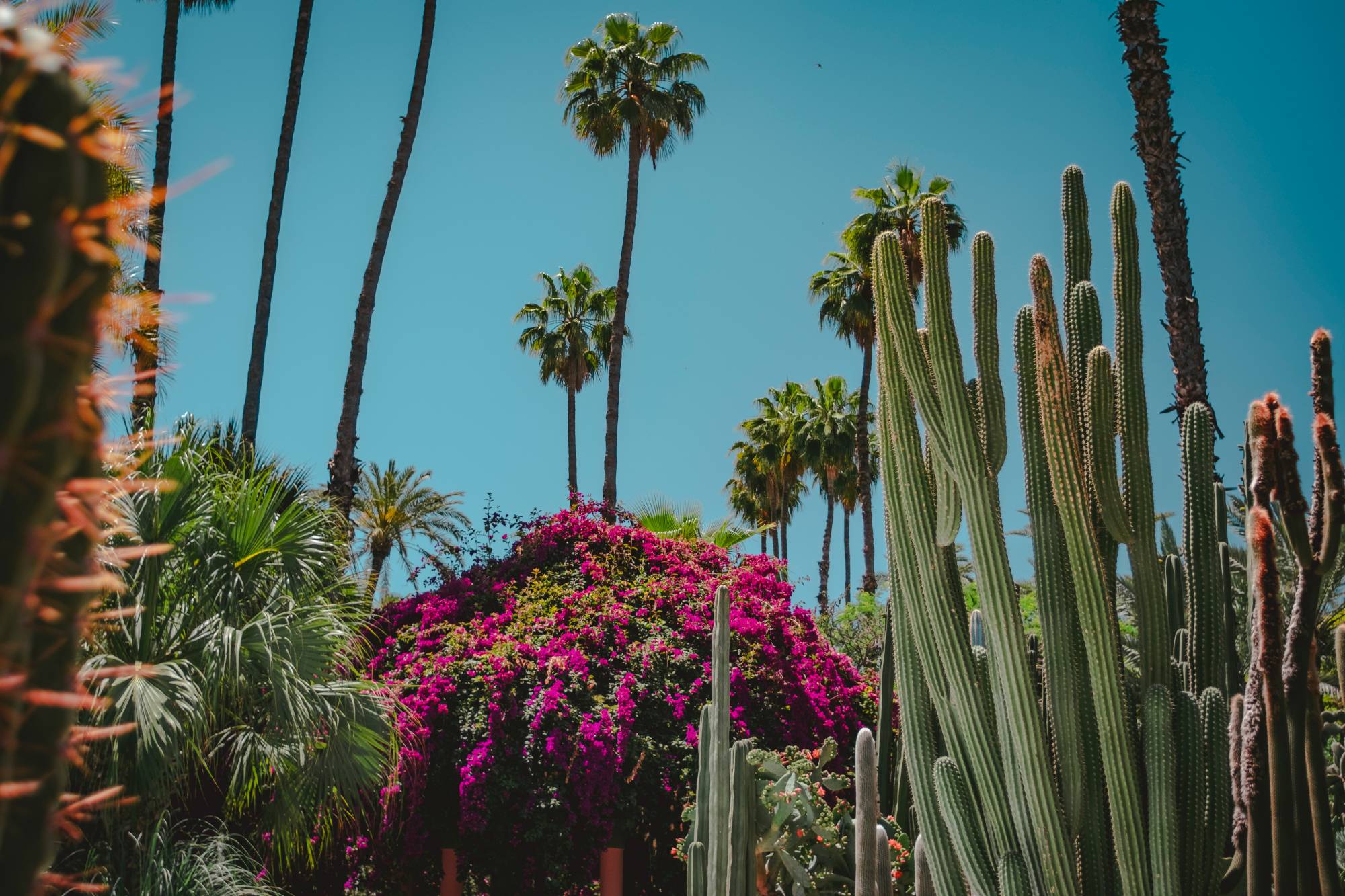
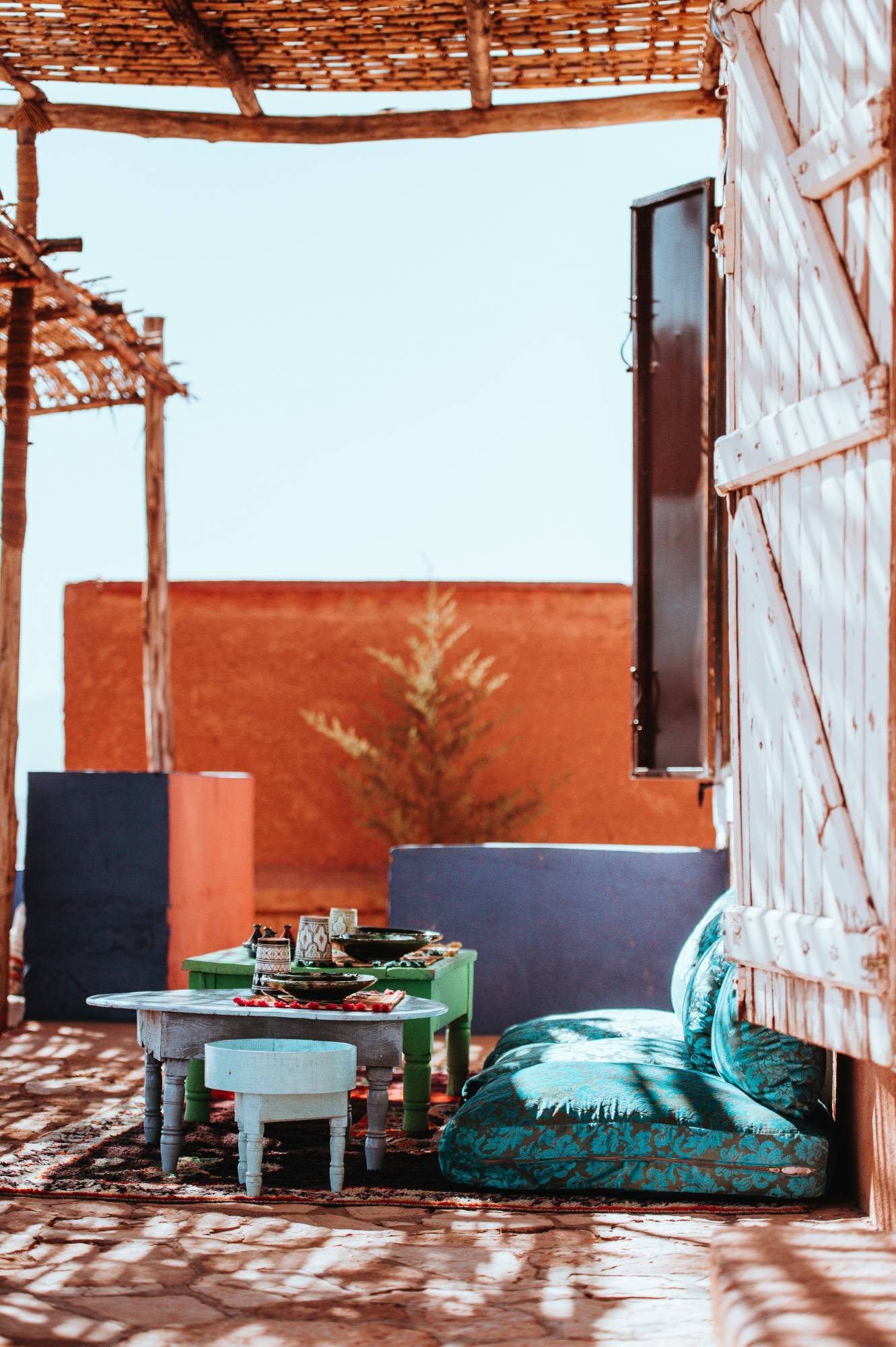
Luxurious and sophisticated - thanks to a restoration which has conserved and valorized the precious parts of the edifice with antic items of furniture combined with deluxe details, La Maison Arabe, in the heart of the district of Bab Doukkala, closed to Jemaa el-Fna square, is a luxurious hotel from the Cenizaro Hotels & Resorts group. It owns two restaurants, Le Restaurant and Les Trois Saveurs which offer high-end Maroccan, French and asiatic cuisine. The hotel has a biological garden that produces most of the aromatic herbs and products used in the La Maison Arabe cuisine. You can also relax by enjoying 2 hammams and 5 massage rooms and 2 heated swimming pools.
There are so many alternatives. For example, near the famous Majorelle garden, we have the pleasure to take a walk on the Terrasse des Oliviers, with the terrace transformed into a roof garden. Another place to visit would be the Riad des Arts, a triumph of carpets with geometric designs, frescoes, and sculptures in an old house completely renovated. Riad Kasbah is a 7-min walk from Jemaa el-Fna Square and offers accommodation in suites, a pool, and a patio.
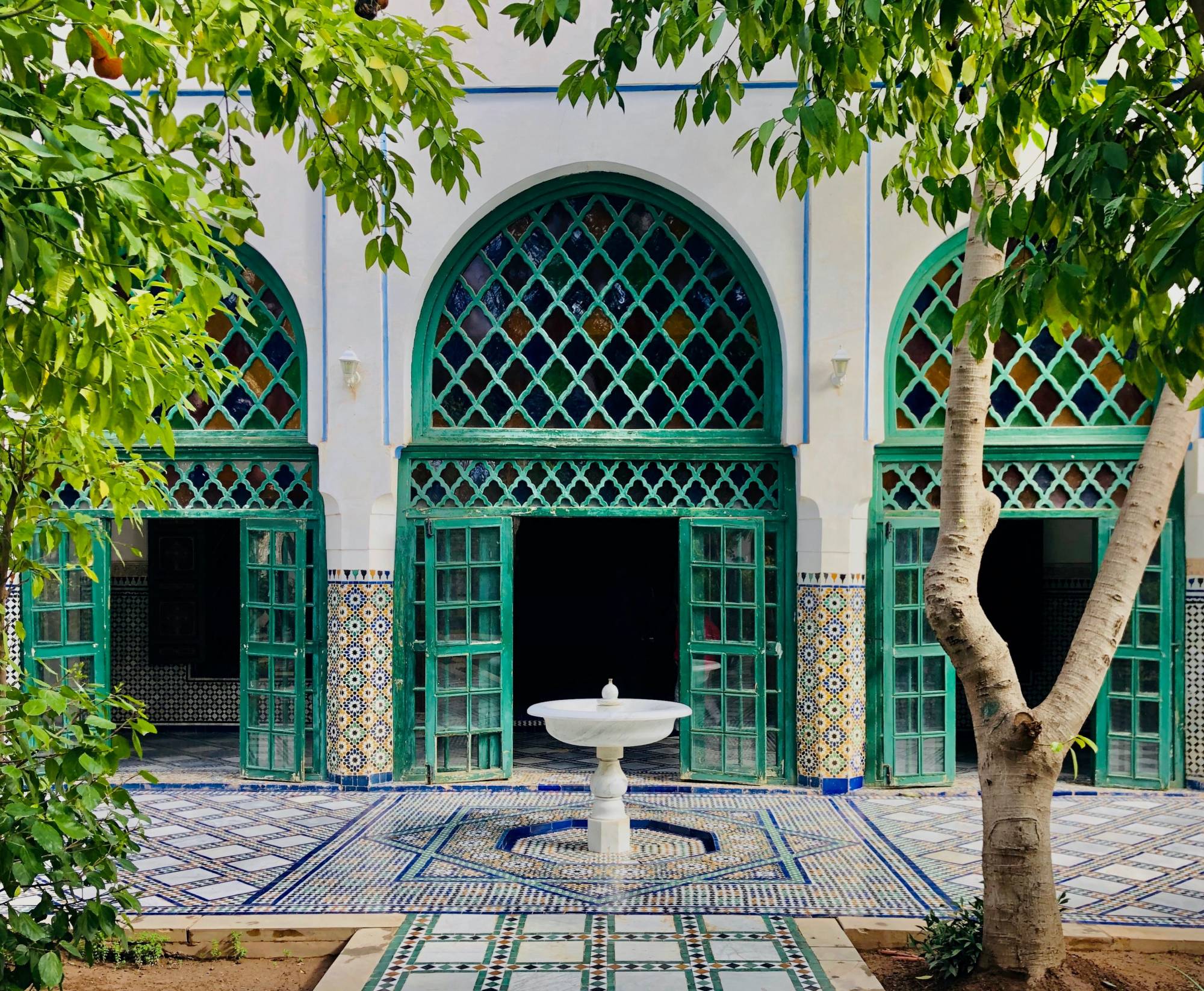
Another unforgettable and legendary stay is offered by the most famous and prestigious hotel in Marrakech: La Mamounia. Every word used to describe this luxurious palace of a thousand and one nights built-in 1923 couldn't represent the splendor and opulence that surrounds its guests: 135 rooms, 71 suites, and 3 riads immersed in a 17-acre park with a garden worthy of Eden, a Spa of 2,500 sqm. a blue Majorelle gym and 4 super gourmand restaurants. Among fountains, lanterns, charming patios, marbles, tadelakt stuccoes, and refined zellige mosaics, the Hotel La Mamounia is a unique jewel: a masterpiece that encloses Moroccan architecture, art, and craftsmanship in an experience that combines luxury, culture, and tradition. Your most illustrious guest? William Churchill, to whom were also dedicated the homonymous bar and a hotel suite. To leave you breathless!
Another fascinating Riad is the Riad Les Yeux Bleus, a luxury boutique hotel with a hammam located in the Bab Doukkala area, ten minutes walk from the Jemaa el-Fna square in the heart of the city. The super colorful rooms are a delight for your eyes, furnished with modern design elements, traditional furniture, and carpets. Always on the top of the list of the best, we can also mention the Riad EL FENN, among the most beautiful in Marrakesh. This small resort nestled in the most intricate streets of the Medina of Marrakech is a real jewel and a place of great inspiration.
In all, it has 28 rooms, including standard rooms and suites, 3 swimming pools, a beautiful panoramic terrace overlooking the city and one of the most beautiful minarets of Marrakech, restaurants, bars, and even a boutique with beautiful furnishings and local designer clothes for sale for hotel guests and visitors.
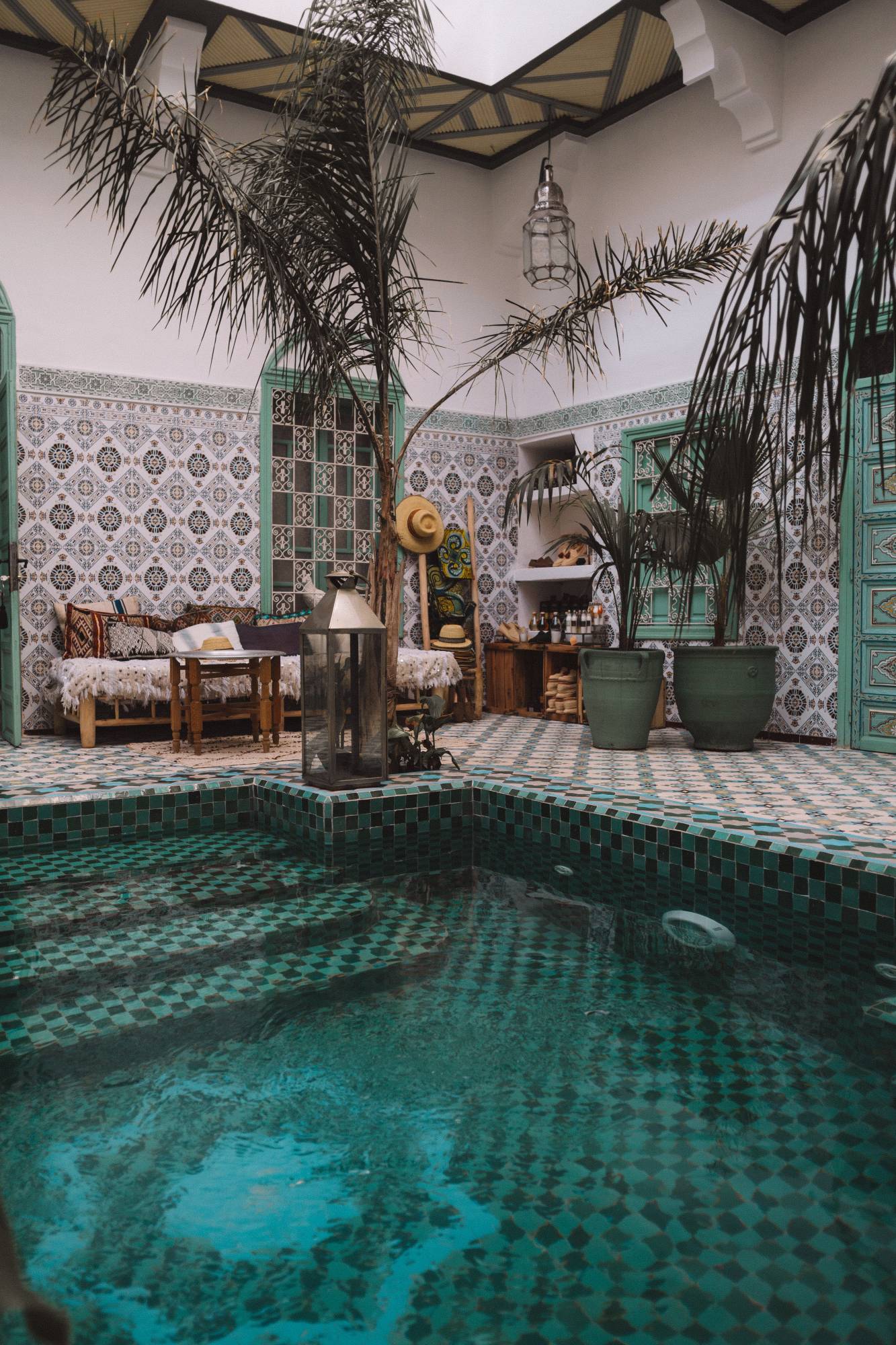
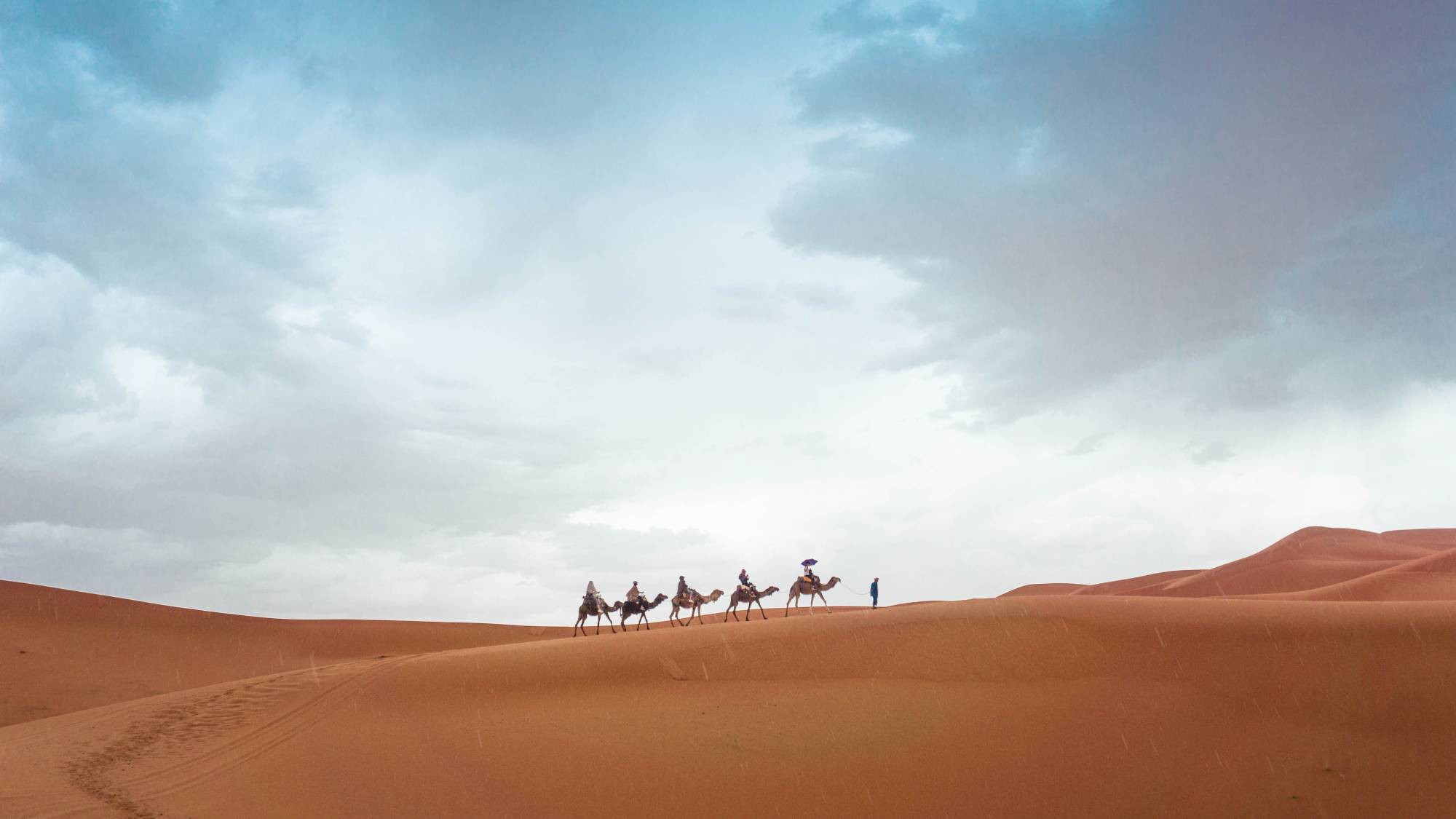
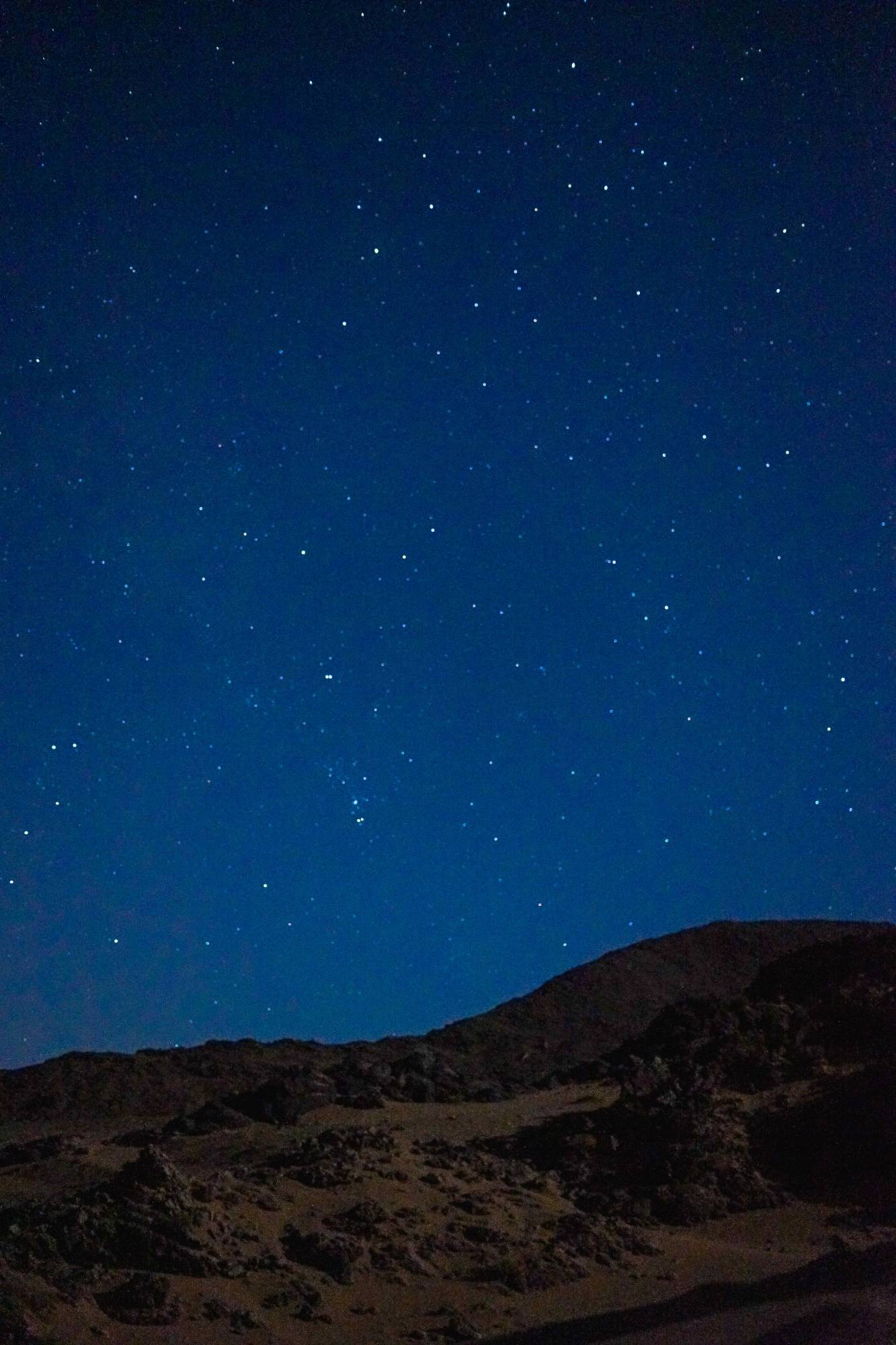
And if currently, people are more focused on the names of the streets that remind of the ancient splendor of the city, the new project is about a further return to the "green" with gardens that appear first of all within the Riad. The beauty of the gardens of Marrakech is legendary and if today, not all the areas full of vegetation are impressive as a century ago, you can still discover the small seasonal wonders of nature. Enjoying the view in a buggy is one of the most pleasant attractions when the climate is not yet pungent and tells the look of the city’s history, even more than a monument.
The biggest garden is the Agdal Garden, the Jardin de L'Agdal, which was created in the twelfth century thanks to the Almohad sultan Ab del-Moumen and then enlarged by the Saad dynasty. The melody of the Ourika River acts as a gentle background, you can also visit the Sahraj-el-Hana (Cisterna Della Salute) and the terrace of the nineteenth-century pavilion Dar el-Hanacon, the spectacular view of the Atlas Mountains.
Another attraction not to be missed is the Dar el-Beida, a pavilion that is closed during the winter season because the sovereign stays there.
Another charming garden worth visiting is the Menara Garden, the Jardin of the Menara. Mohamed IV built an elegant green-tiled pavilion that overlooks a body of water, inside a garden of cypress trees surrounded by olive groves.
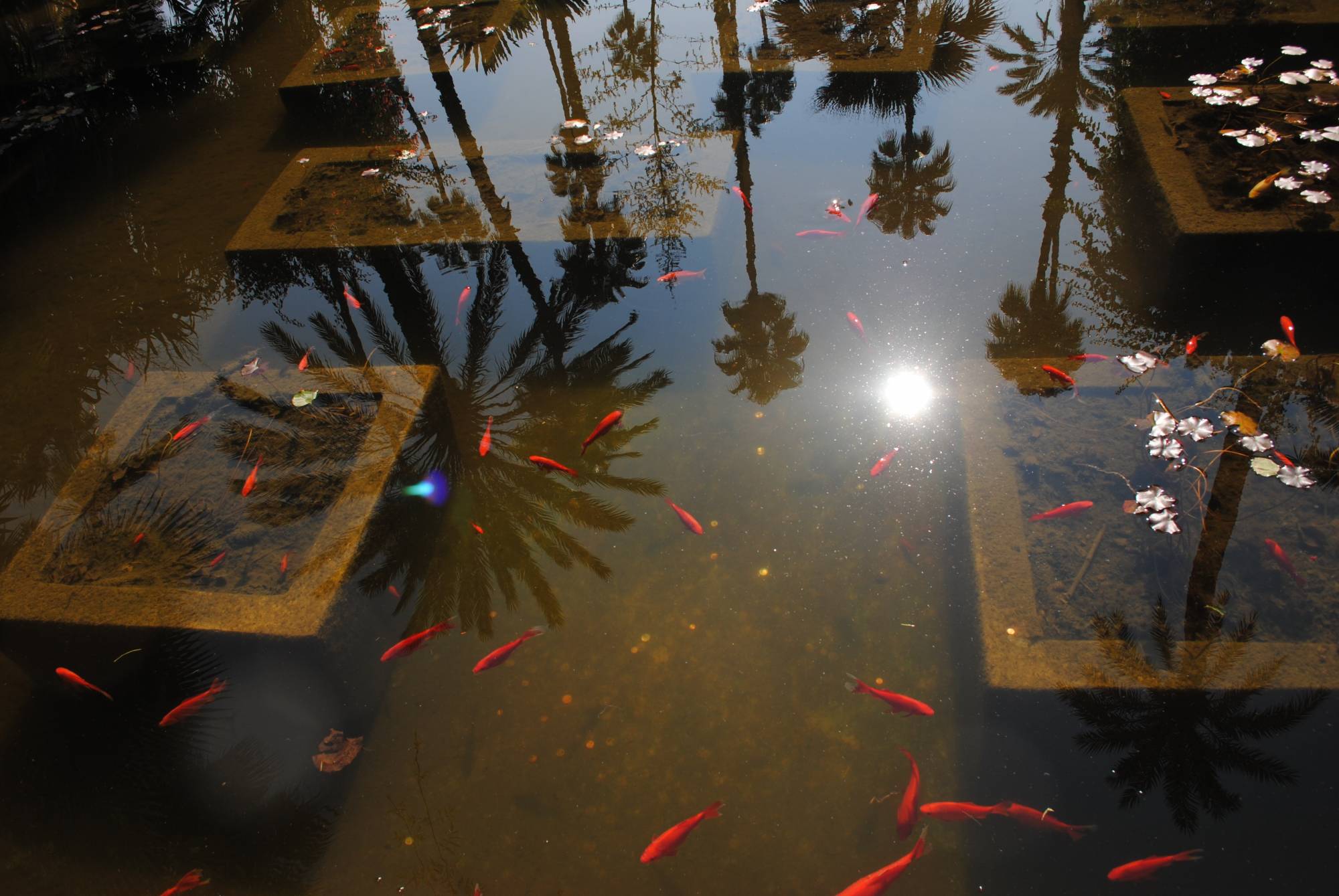
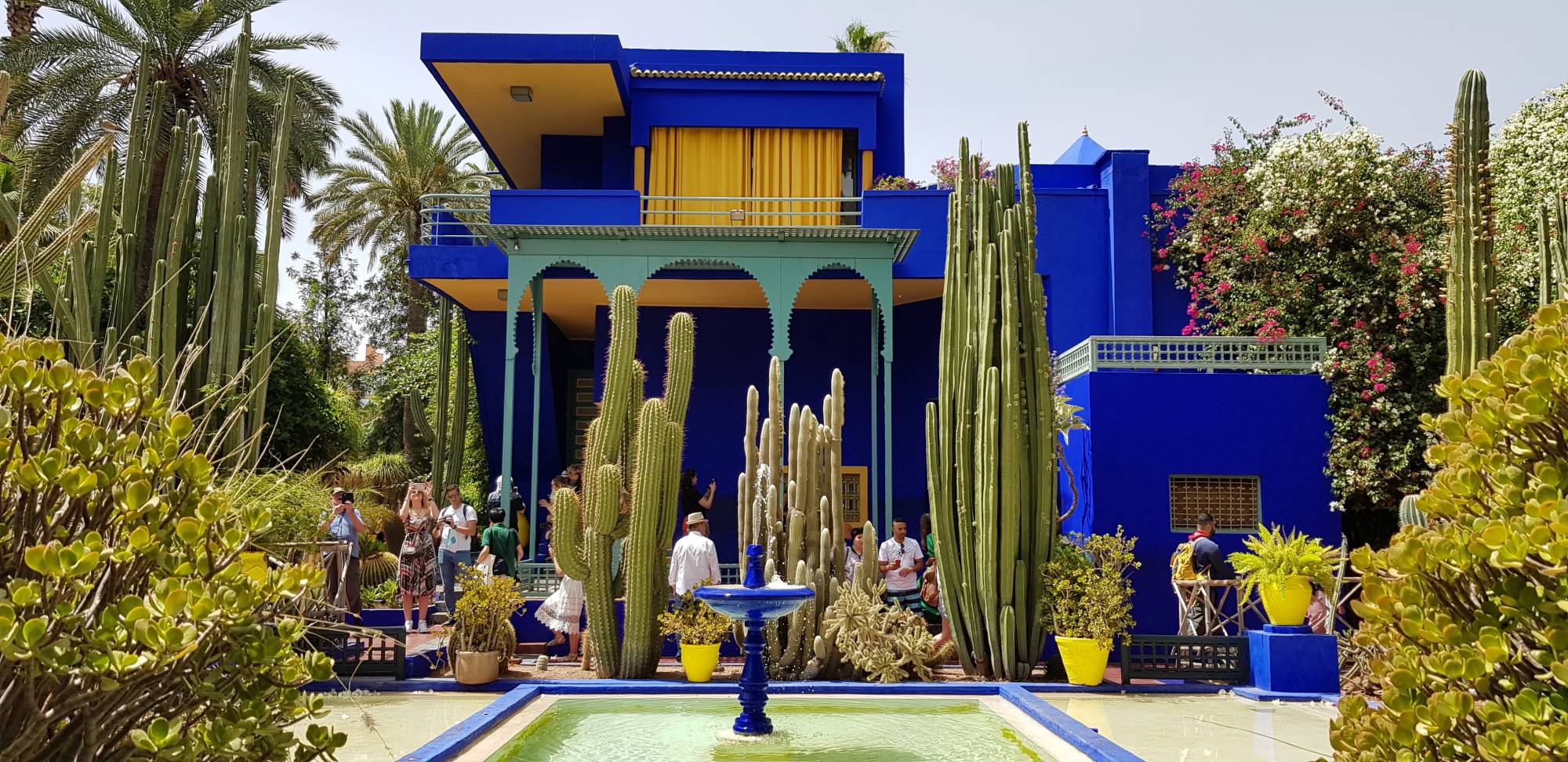
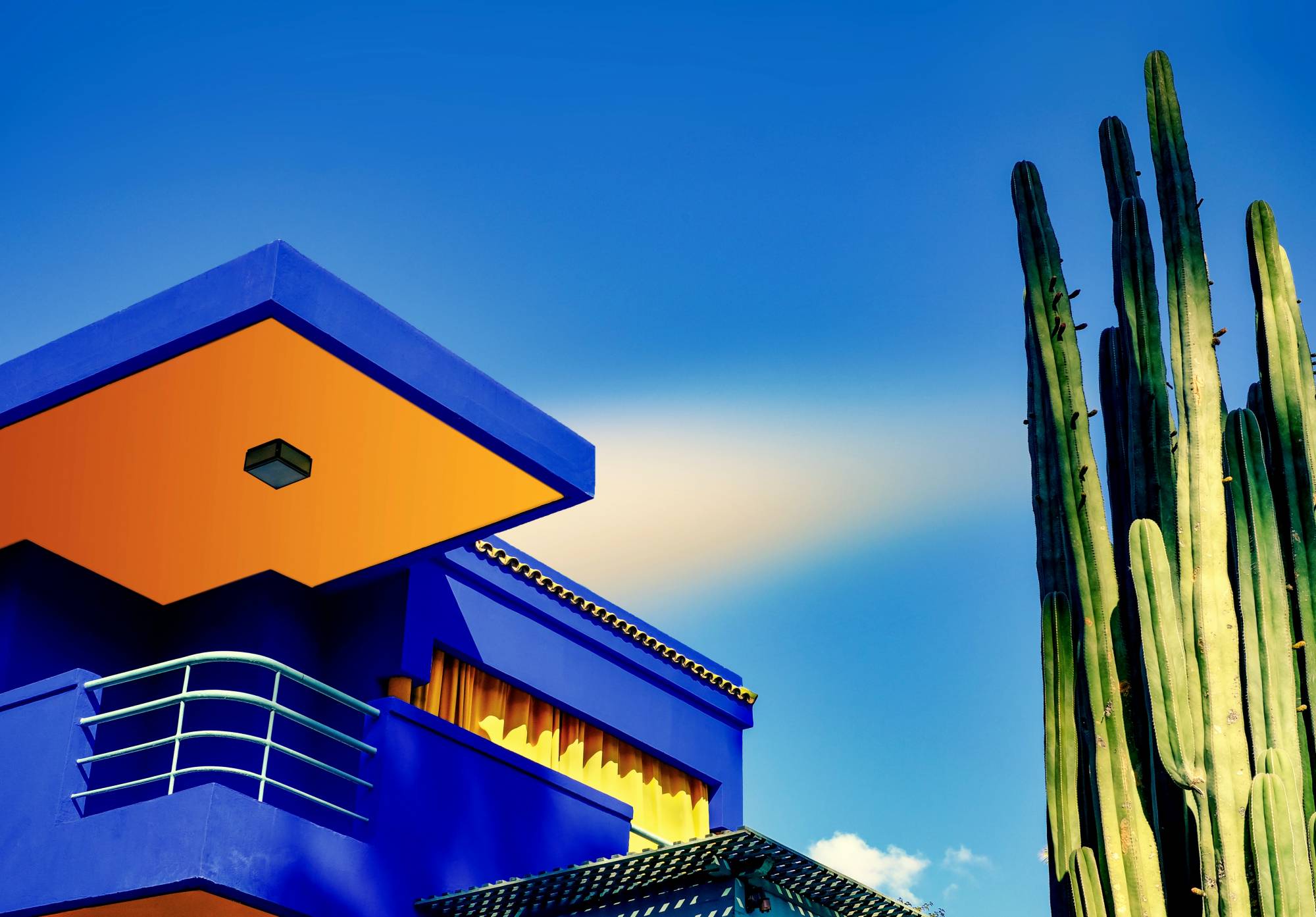
Another absolutely authentic and local experience is the public Berber hammam, typically located next to a mosque. The hammams are strictly divided between women and men and, once taken into custody by a Berber woman or man, the ritual begins.
The first step of the ritual is the savonage, that is, it is completely smeared with black soap, which combined with the steam frees the skin of impurities. If you are a woman, then half an hour in the Turkish bath, and then lie down on a marble bed to begin the real exfoliation with the Kessa glove. Among these places of relaxation, it is impossible not to mention the hammam of the Royal Mansour Spa which is part of the Leading Hotels of The World. Here you enter from the citrus garden, with a private entrance independent of the hotel, and cross the intricate lace-like wrought iron atrium. You can choose three types of path, and it is an ultra-chic sensory experience of the Moroccan wellness ritual. Another super luxury hammam is one of those offered on the menu of the Bains de l'Alhambra Kasbah: there are 5 types of hammams and nine exfoliating treatments and relaxing massages with argan oil and rose essences. Finally, the Mandarin Oriental Spa is surrounded by 20 hectares of greenery and offers treatments based on crushed olive pits and eucalyptus. In the hammam, body cleansing treatments and steam baths are accompanied by massages and beauty treatments that end with a glass of green tea or orange blossom milk.
For art and design lovers, Marrakech hides a real treasure. In fact, Marrakech is one of the most interesting destinations on the African continent for design and contemporary art. Some are the addresses not to be missed if you are in the Sidi Ghanem neighborhood: Chabi Chic, a shop selling objects for the home, table and bathroom in a modern Moroccan style, MSB Interiors which offers a beautiful selection of furniture and furnishing objects from local crafts, Galerie 3020, a contemporary art gallery that mainly exhibits and sells works by Moroccan artists, Magasin Général, a colonial and industrial style furniture shop, and finally Galerie Pop, an eclectic shop that mixes objects vintage, modern furniture and accessories and babouches collections.
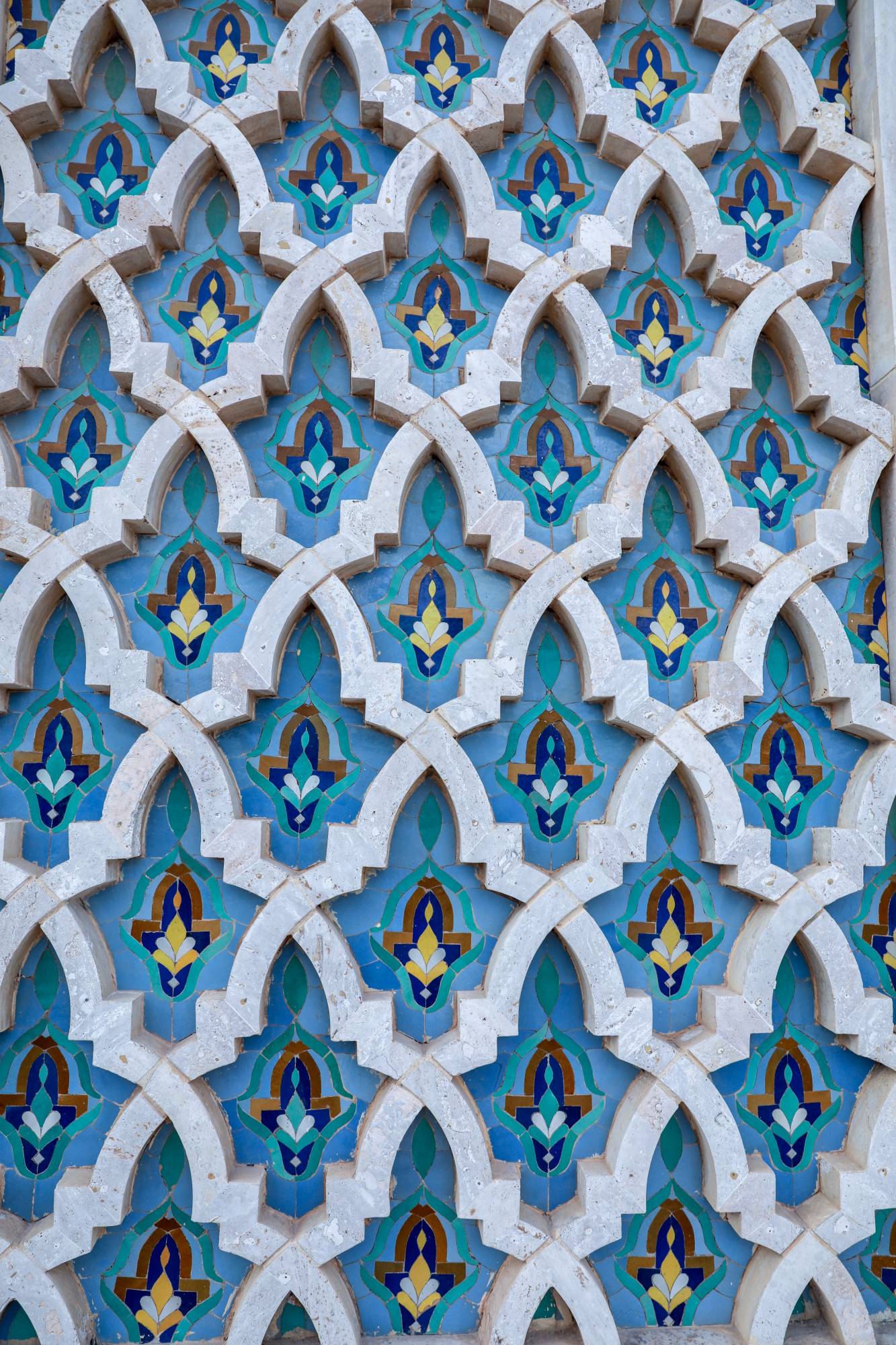
To discover the local creativity, the Musée des Confluences is also interesting: born as the residence of Thami El Glaoui, called Pasha of Marrakech, it is located right in the heart of the Medina and, with an enchanted garden inside, it is considered one of the most beautiful palaces of the city.
Another destination for art lovers is certainly the Musée d’Art Contemporain Africain Al Maaden (MACAAL). Located on an estate outside Marrakech, it was born from the initiative of the art collector Alami Lazraq and his son Othman Lazraq and was designed by French architect Jean-Francoias Bodin, creator of the Musée Picasso. The independent contemporary art museum promotes African art with exhibitions, training programs and special events.
Very impressive is the Maison de la Photographie, a museum entirely dedicated to Moroccan photography with a collection of over 10 thousand documents between 1870 and 1960. Between black and white shots, female portraits, vintage photos on daily life in the souks or reportage in the desert among the Berber tribes, one is easily fascinated by the photographic history of Morocco. Another unmissable destination is the Montresso foundation created by Jean-Louis Haguenauer, which hosts artists from all over the world who return periodically to collaborate with local artists and to complete multi-year projects. Inside, a beautiful olive grove with the Jardin Rouge artistic residence, a unique house that welcomes artists from all over the world, supported by the foundation, to express themselves in a creative laboratory and experiment with new perspectives. A representative of the artistic fertility of Morocco, and of its being outside the orientalist stereotypes still present in Arab art, there is the Voice Gallery, opened in 2011 by the Italian Rocco Orlacchio whose goal is to give "voice" to emerging artists local through exhibitions and events, trying to bridge the gap between young international artists and African creatives. Another attraction is the Musèe de Mouassine, a 17th-century douiria. Douiria is small houses intended for the host's guests. The Women's Room, in Moorish style and with a Berber ceiling, is a space for exhibitions, which change every two months. Like many attractions in Marrakech, in the maze of alleys of the Mouassine district, hides Le Jardin Secret, a park-museum, opened after careful restoration by two Italian entrepreneurs, with a noble house from the second half of the 1500s, the high surrounding walls ocher color, pavilions with carved cedar architraves, a private hammam, and in the exotic garden the ingenious irrigation system with the flowing waters of the Atlas.
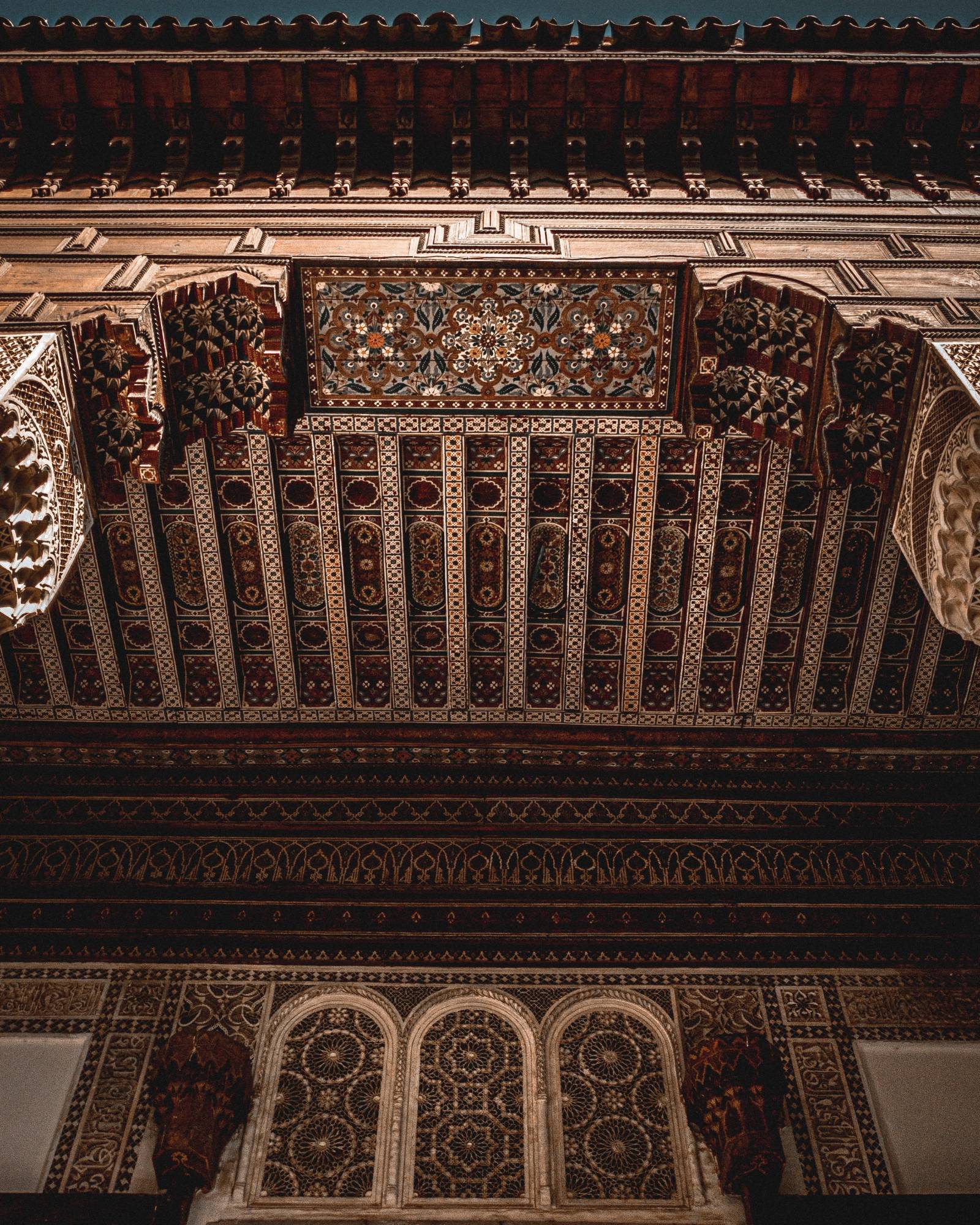
Last, but not least, is certainly Moroccan gastronomy which, like art, is crazy. Moroccan cuisine surprises with its original flavors: a mix of Arab, Berber and Mediterranean influences that have given rise to internationally famous dishes. In the city, you can delight in many varieties of dishes from all over the world, from the most traditional to the most refined cuisine to the simplest street food. In Marrakech, it is possible to live the experience of a real culinary tour that, between intense flavors and oriental spices, will leave visitors with memorable memories. You can start by having lunch in the Guéliz district, the New Town, then go through one of the doors and return for an aperitif in the Old Town, between the Medina and the Jemaa el-Fna square, to finish the day on a terrace or in the garden. for dinner. If you stop by Plus61, a Moroccan-Australian bistro, you can taste truly global cuisine. Here the cultural diversity of Australia blends with the flavors of the Mediterranean, the Middle East and South Asia, in a European and modern environment.
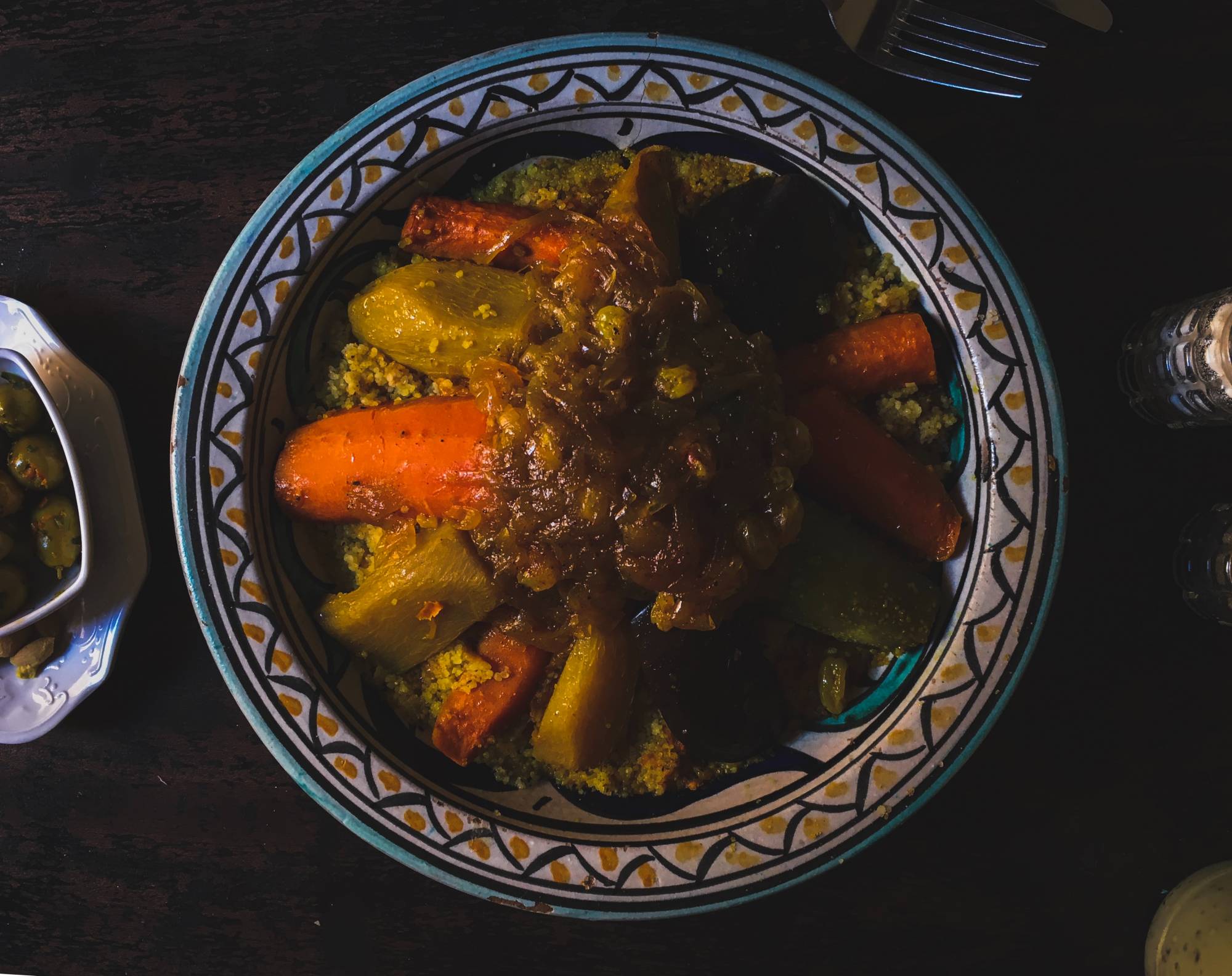
Another really typical little place is Al Fassia, run by a women's cooperative; a welcoming and refined place where you can discover traditional Moroccan cuisine. Another truly characteristic place is Kabana, in the Medina: it is the place for an aperitif with a view of the Koutoubia mosque, while Le Salama is perfect for a dinner with sunset on the square of Jemaa el-Fna. If, on the other hand, wandering through the alleys of the city, you only have time for a fleeting and unpretentious lunch, you can try La Cantine des Gazelles and Le Rôti d’Or.
For those who are never satisfied, not even for the pleasures of the table, unmissable stops to taste the history of Moroccan gourmet haute cuisine are: Dar Zellije, with a refined setting and a beautiful garden, Le Stylia, in a palace of the 15th century, it offers Moroccan cuisine among fragrant petals and bouquets of roses and La Villa des Orangers, at the 5-star hotel restaurant to enjoy elegant gourmet cuisine among the scent of orange trees. You can book at the Table du Palais Lamrani if you want to enjoy a romantic dinner, including cushions and candles, with a Moroccan à la carte menu while for nightlife lovers you can spend a pleasant after dinner with international music at the Jad Mahal, in Le Bo & Zin and to the Source. Try the Paillote, here you can savor French cuisine in a chic version in the shade of centuries-old olive trees that bring refreshment. An environment halfway between the traditional and the contemporary. The menu and service are top levels and the atmosphere is friendly.
Another place to stop is La Sultana, an address to mark on the agenda for a gourmand experience worthy of a sultan. It offers top-notch cuisine in a magnificent, intimate and luxurious setting. Here romanticism blends with a taste for a candlelit dinner by the pool or on the panoramic terrace overlooking the snow-capped peaks of the Atlas. We cannot forget Latitude 31, the new gourmand address of the city that conquers for its soft and contemporary atmosphere combined with haute cuisine proposals, where the research of cuisine is based on the innovation of the most ancestral elements of the Moroccan tradition, giving life to a sort of new sophisticated and ambitious cousin, Nomad place with simple furnishings that evoke the late 50s and 60s, with its vintage movie posters, shabby details and a sunny terrace, frame this restaurant in the heart of the Medina where you can taste delicious traditional dishes reinterpreted in a modern way and finally Le Jardin, created by the young Moroccan entrepreneur Kamal Laftimi, a must for artists, creatives, fashion people and anyone looking for a small green oasis within the Medina. Here you can enjoy Moroccan dishes and European cuisine, immersed in a lush garden, among banana trees, turtles and parrots.
